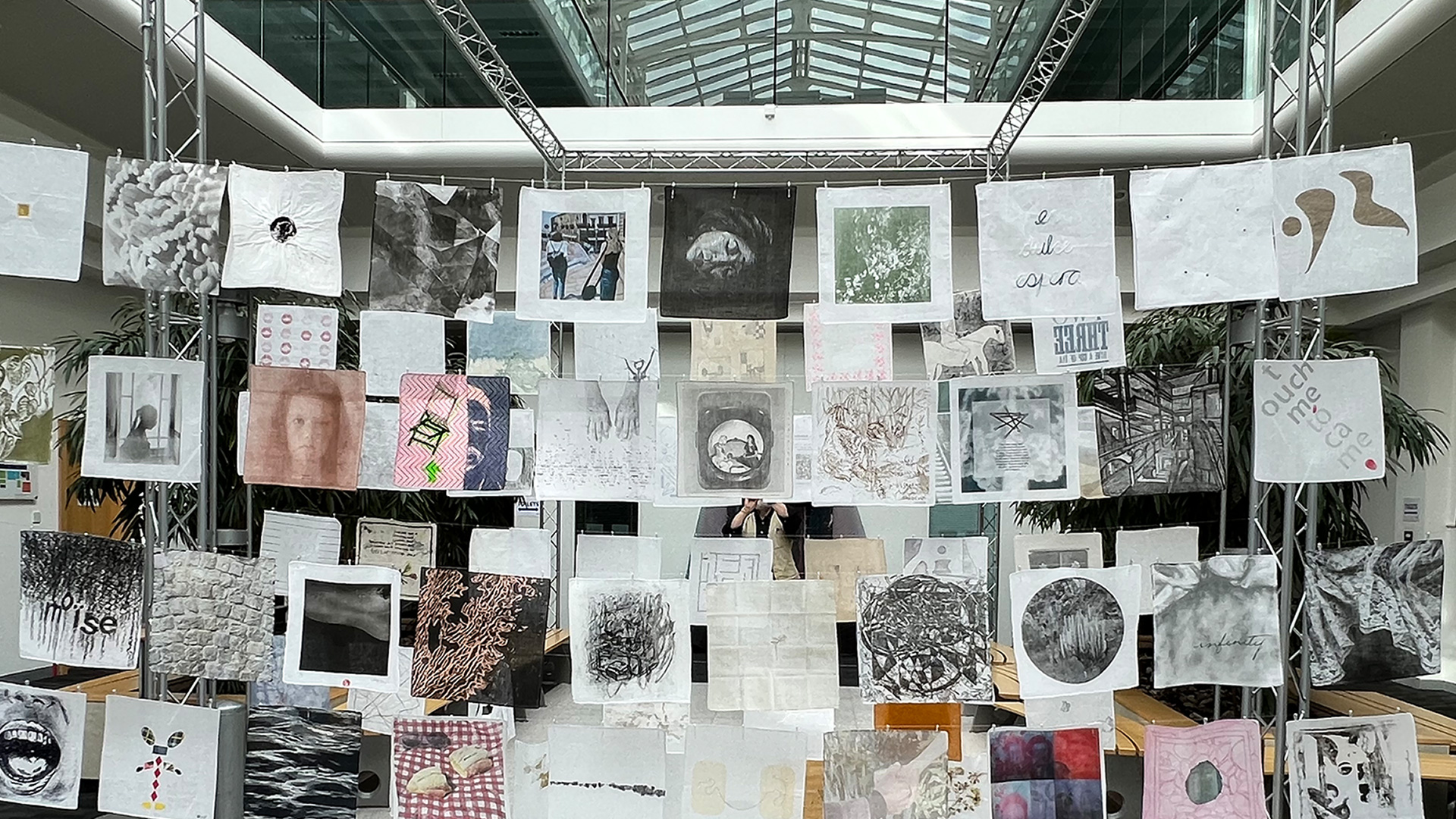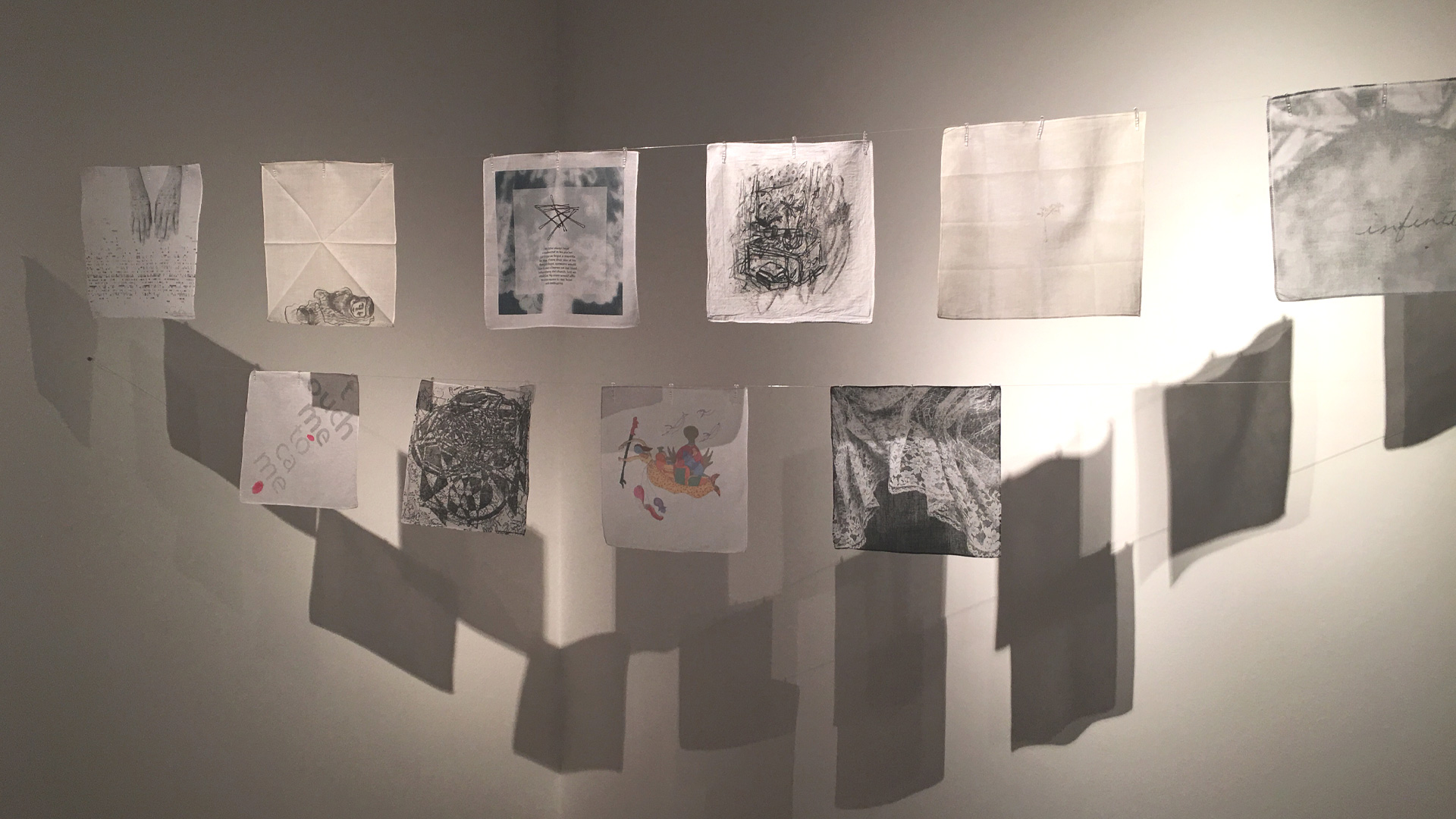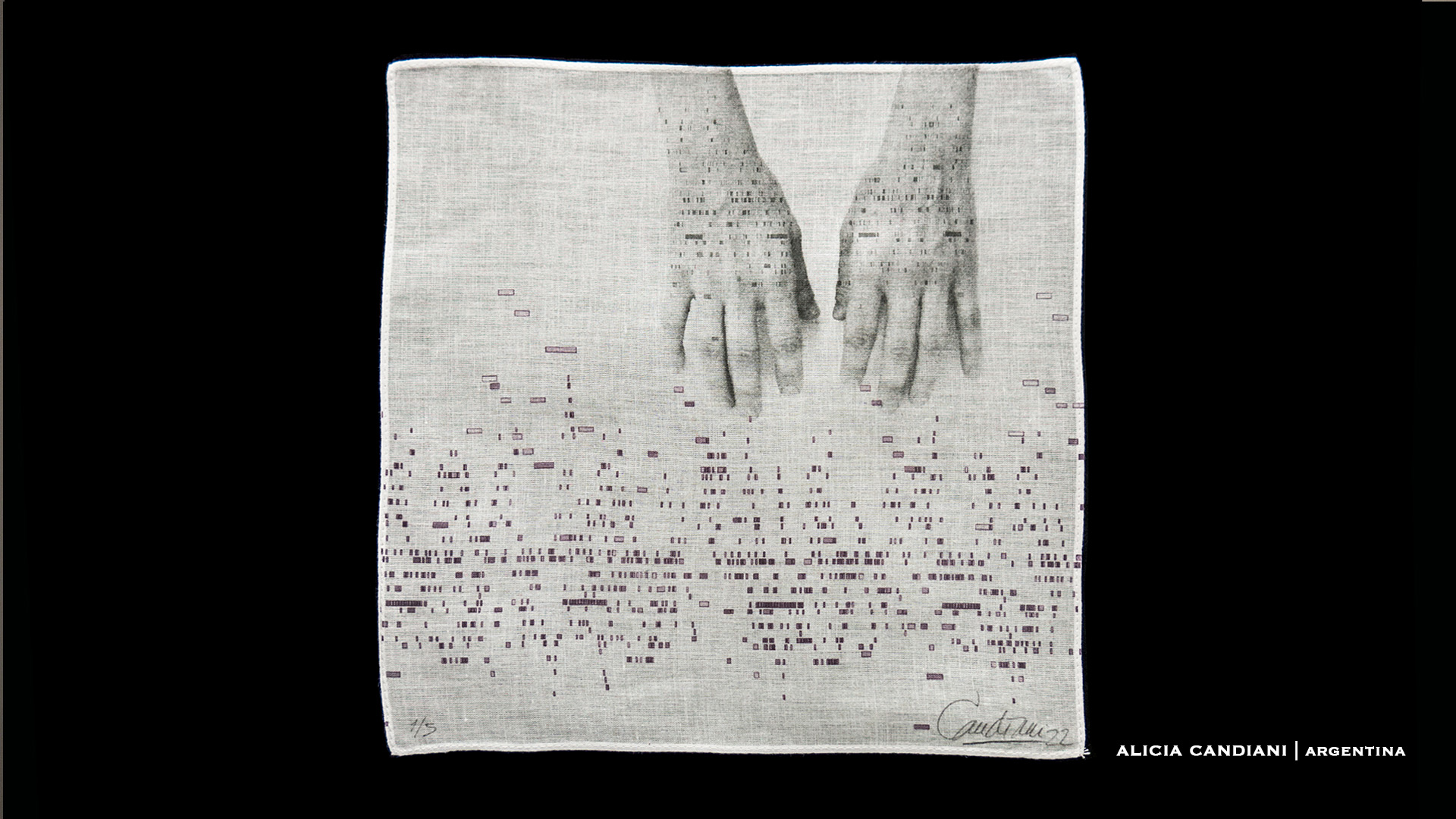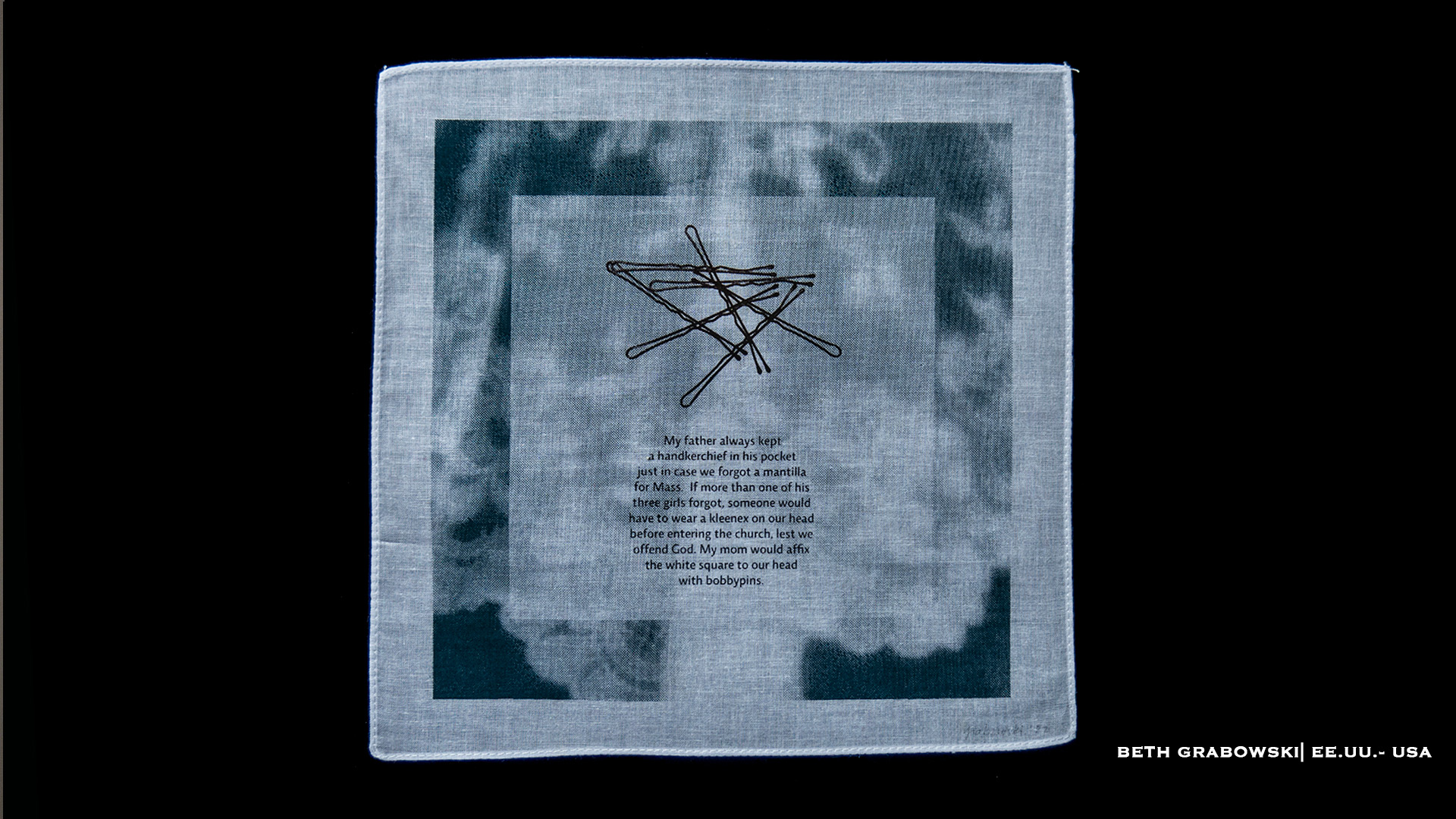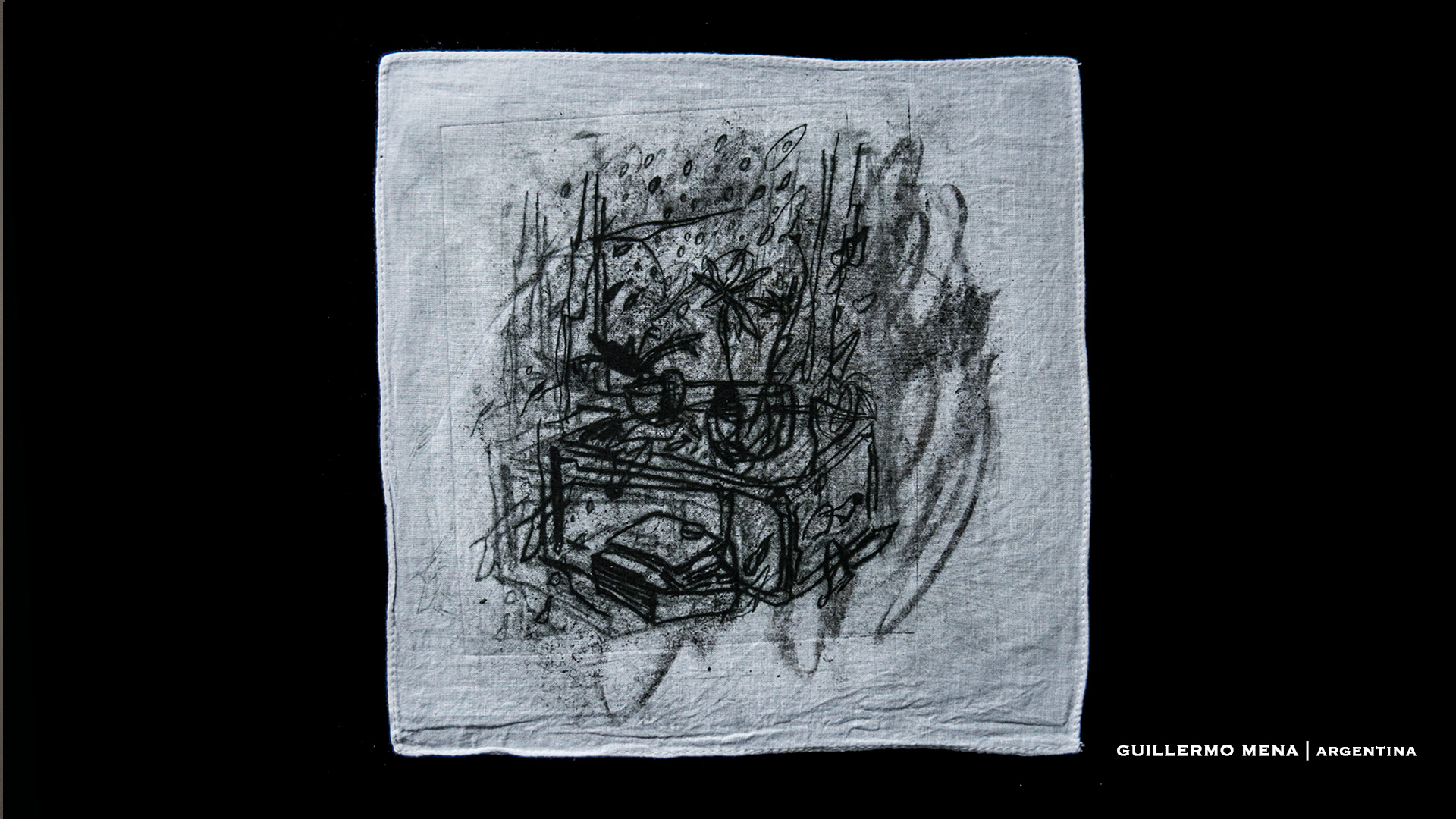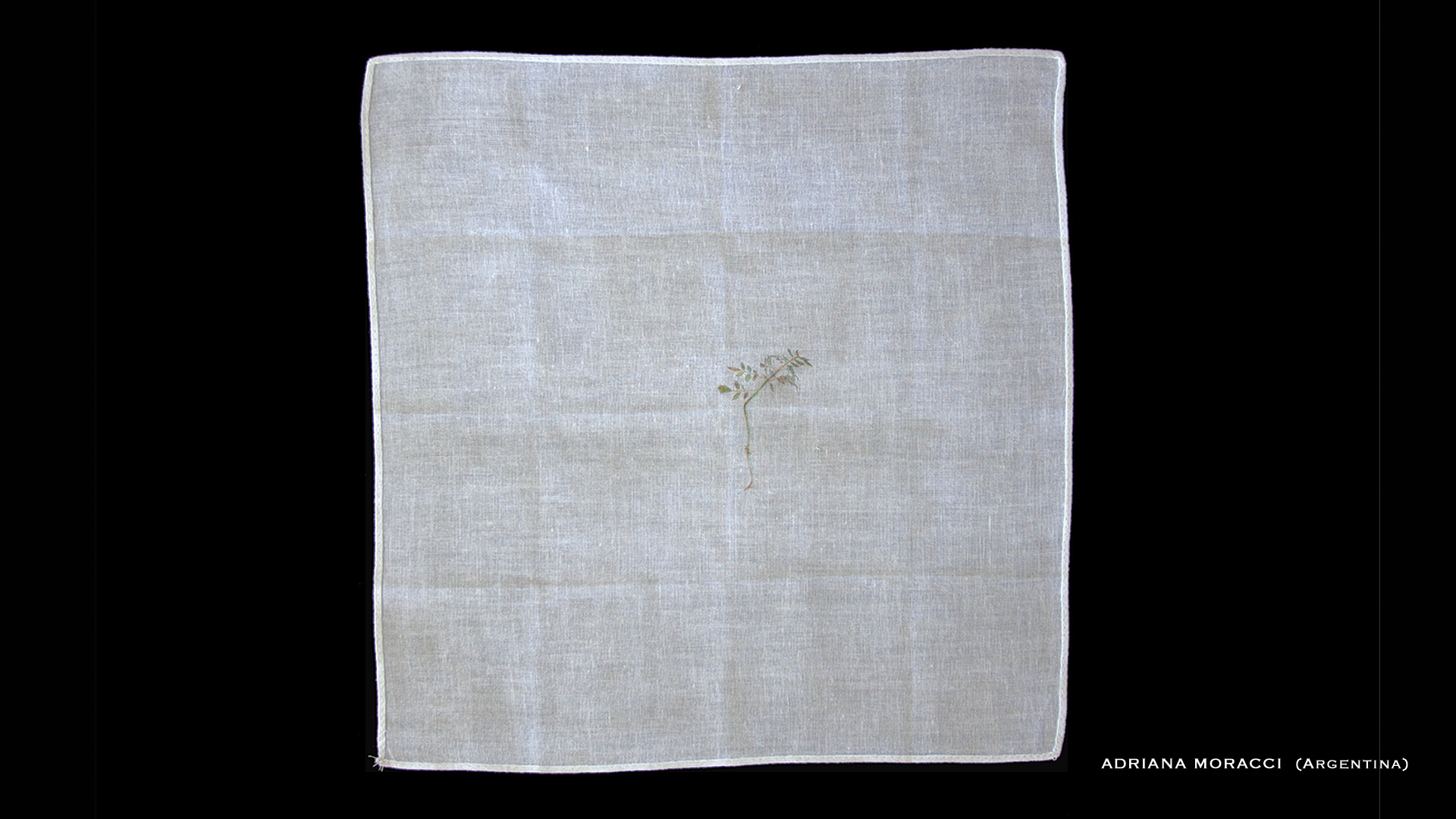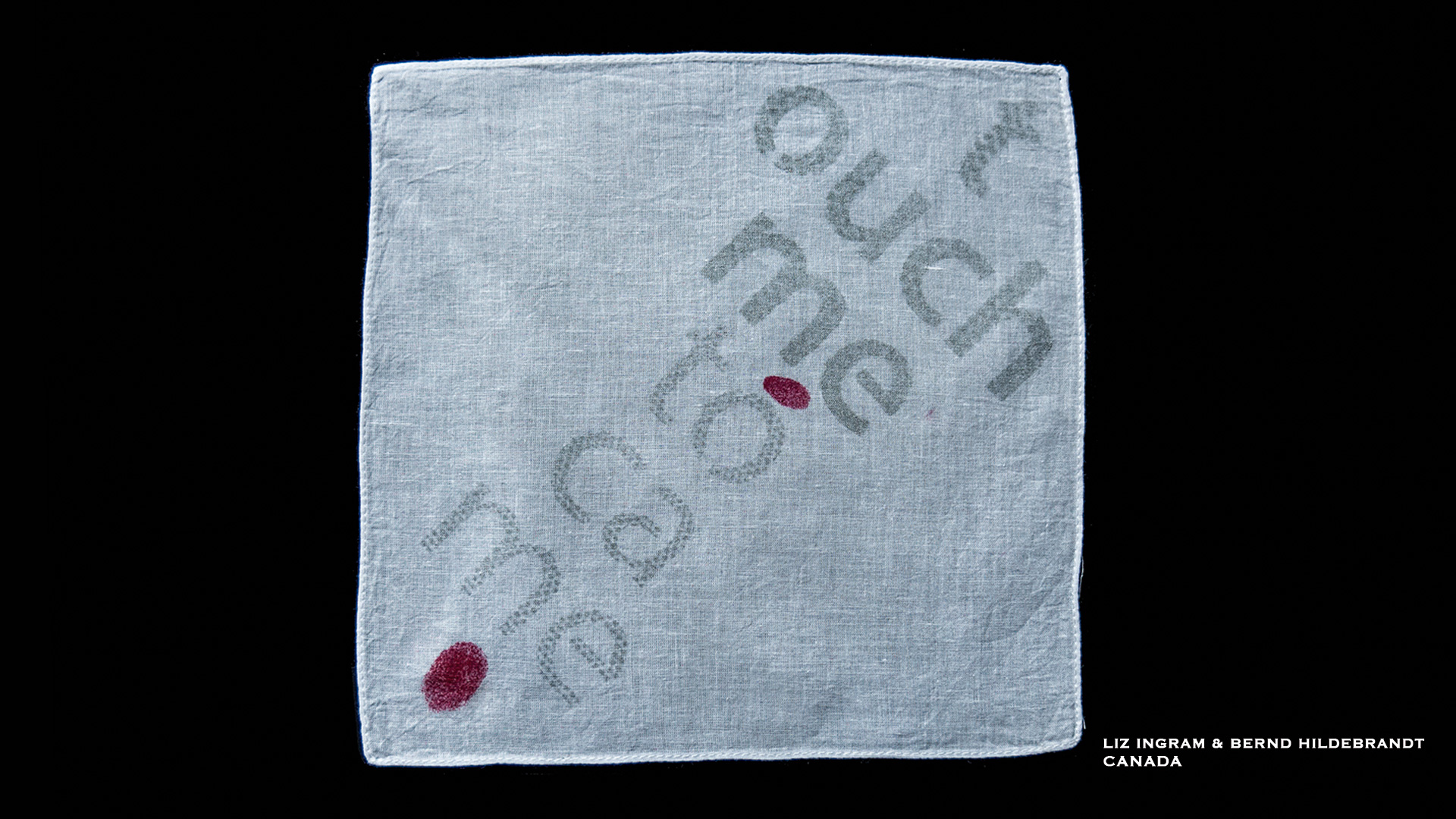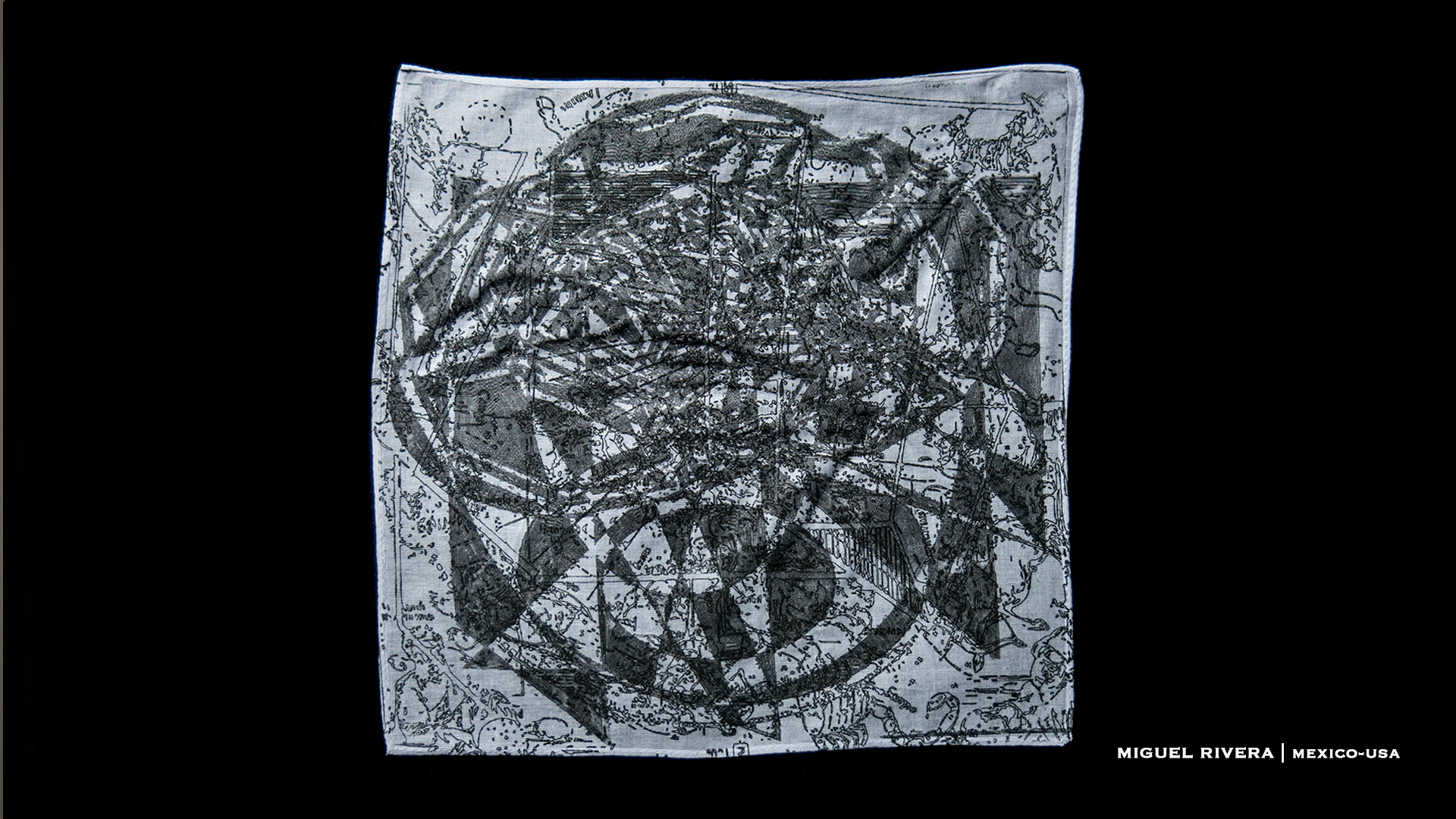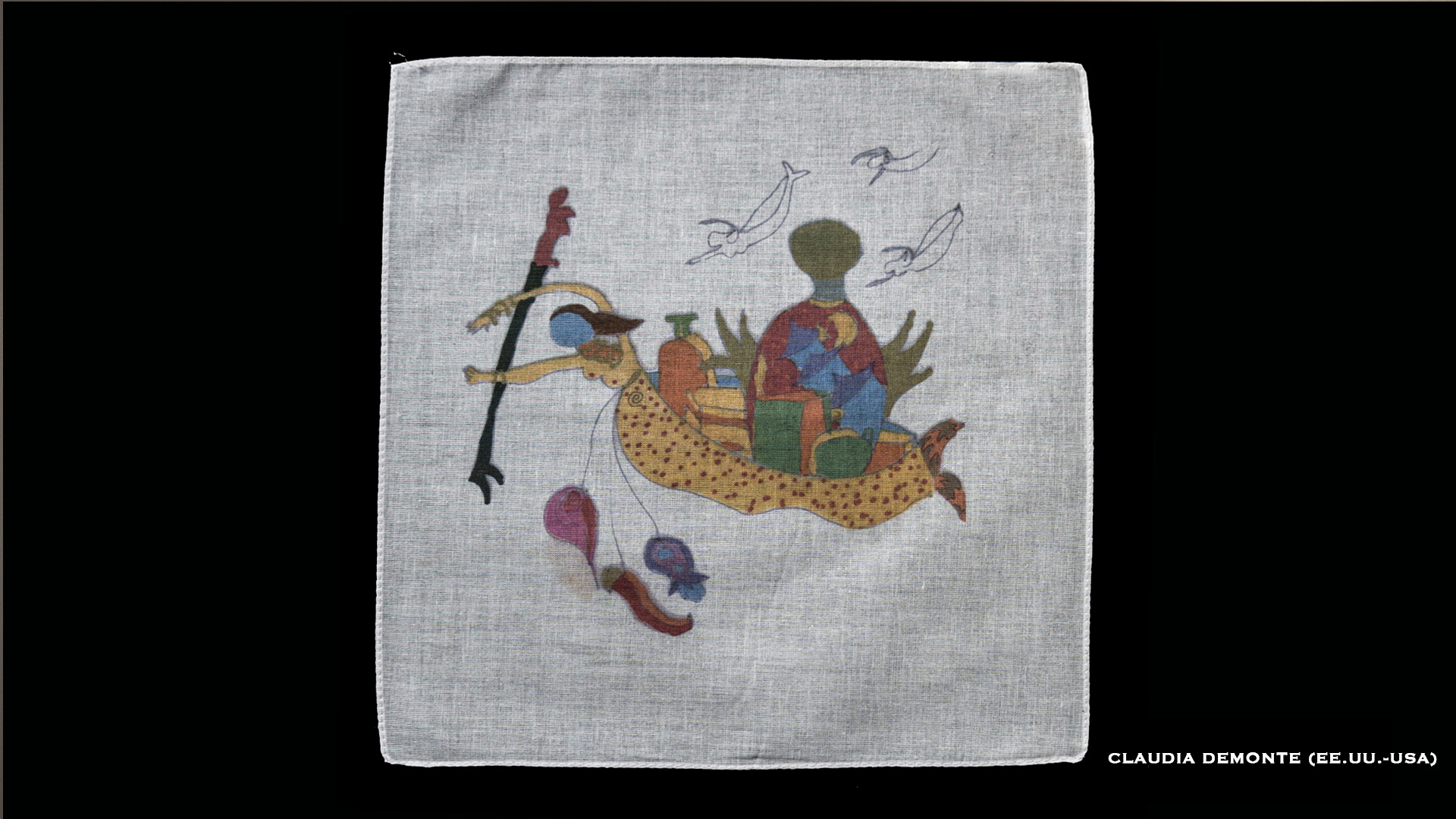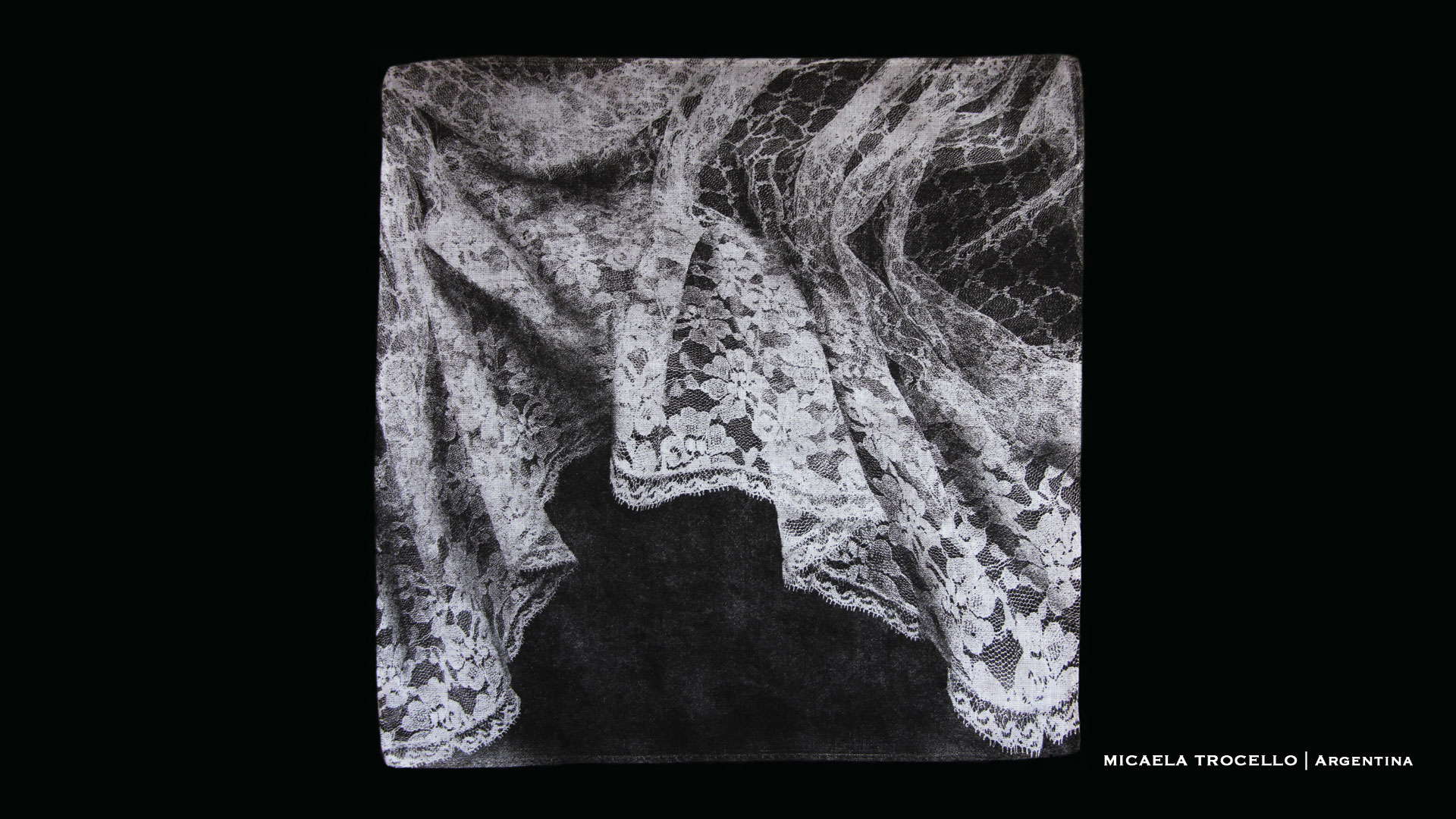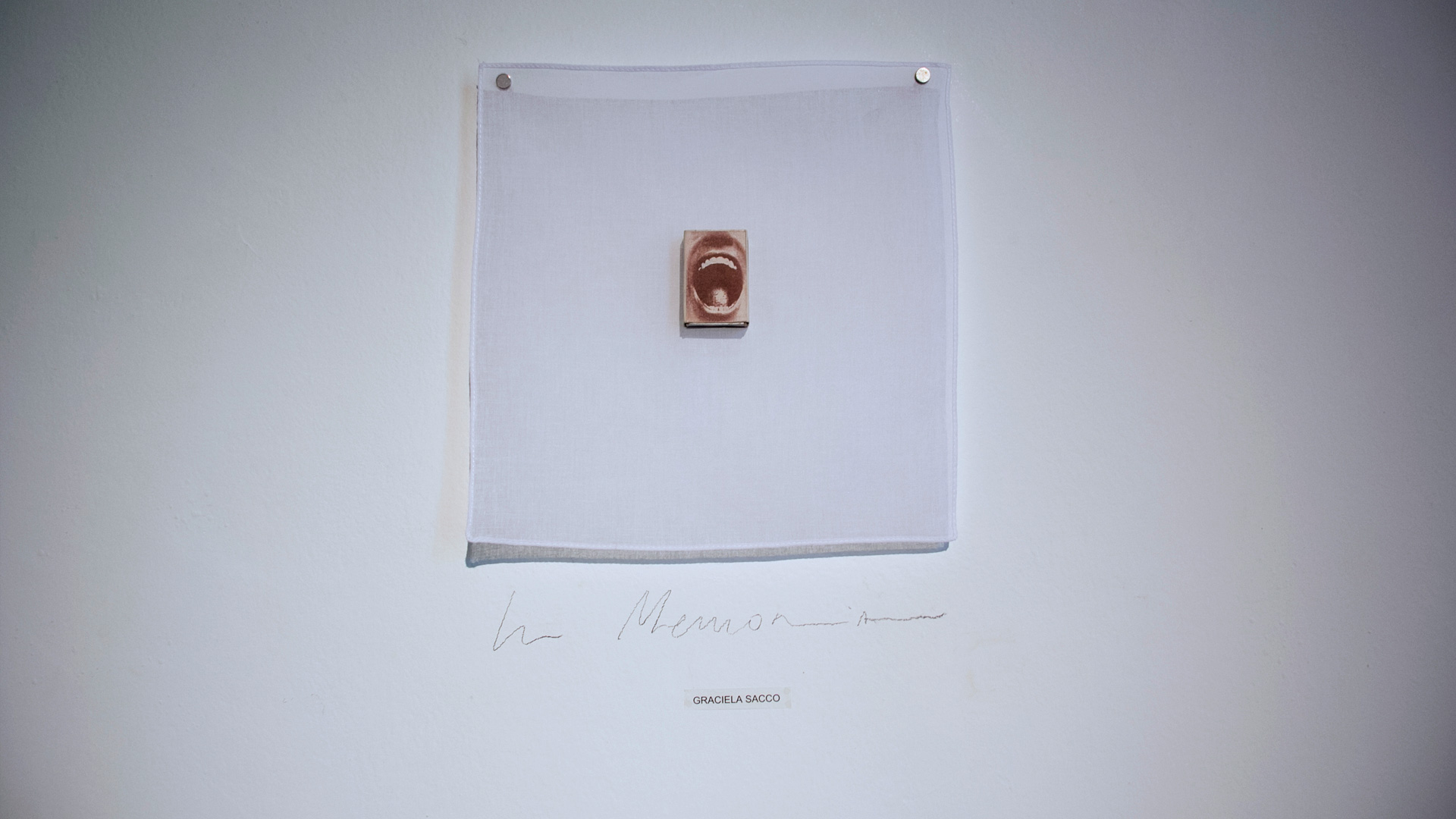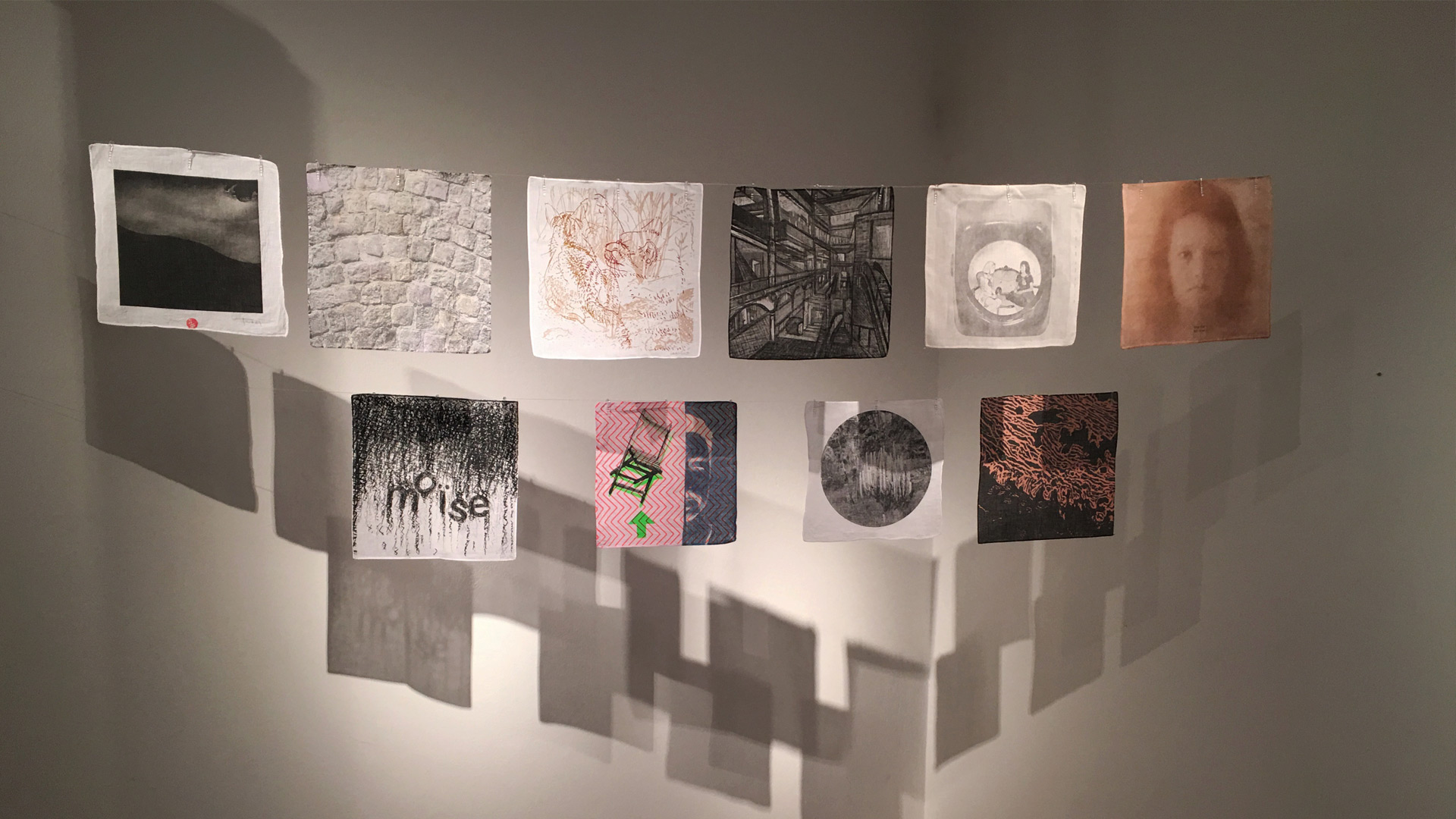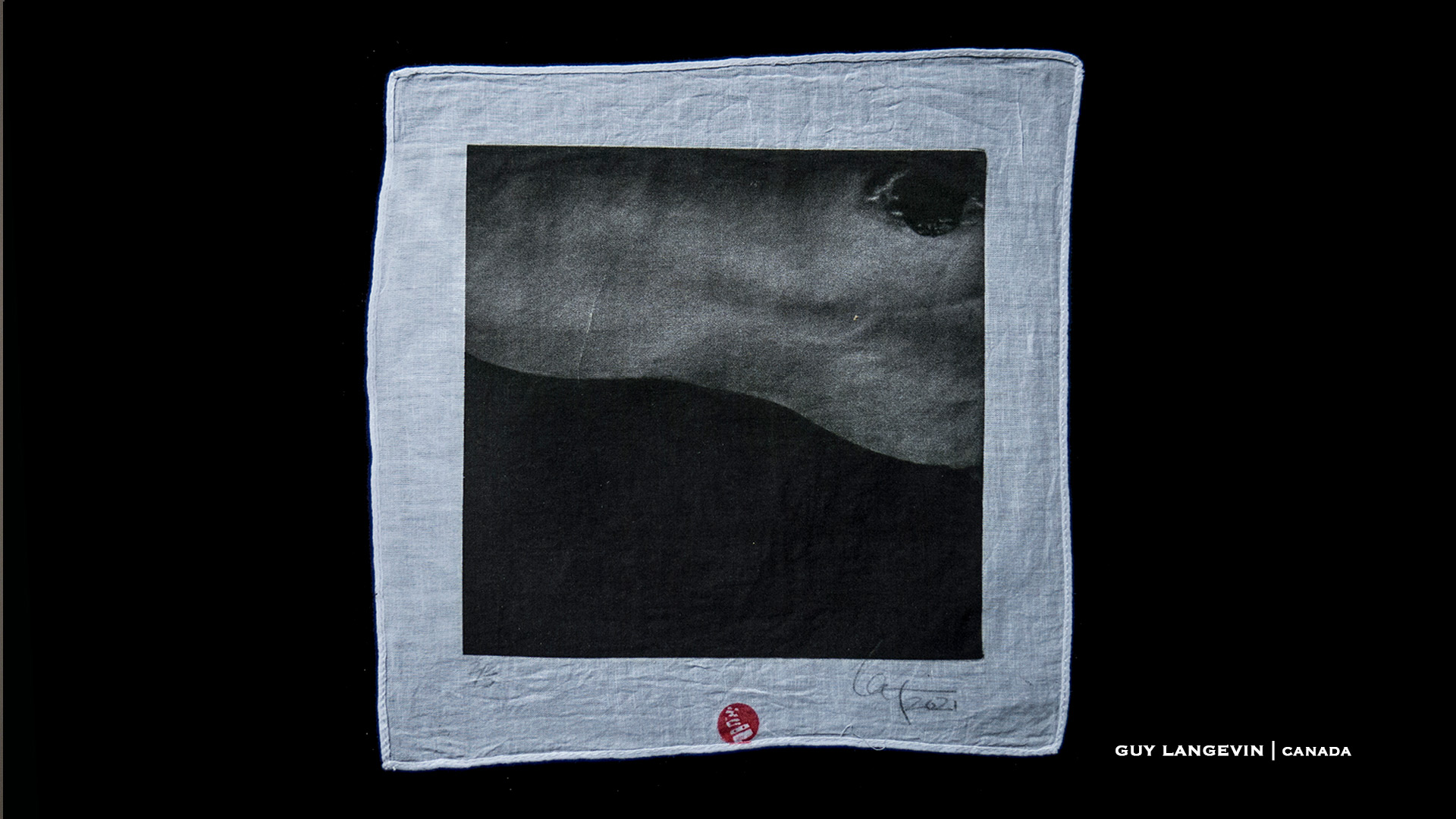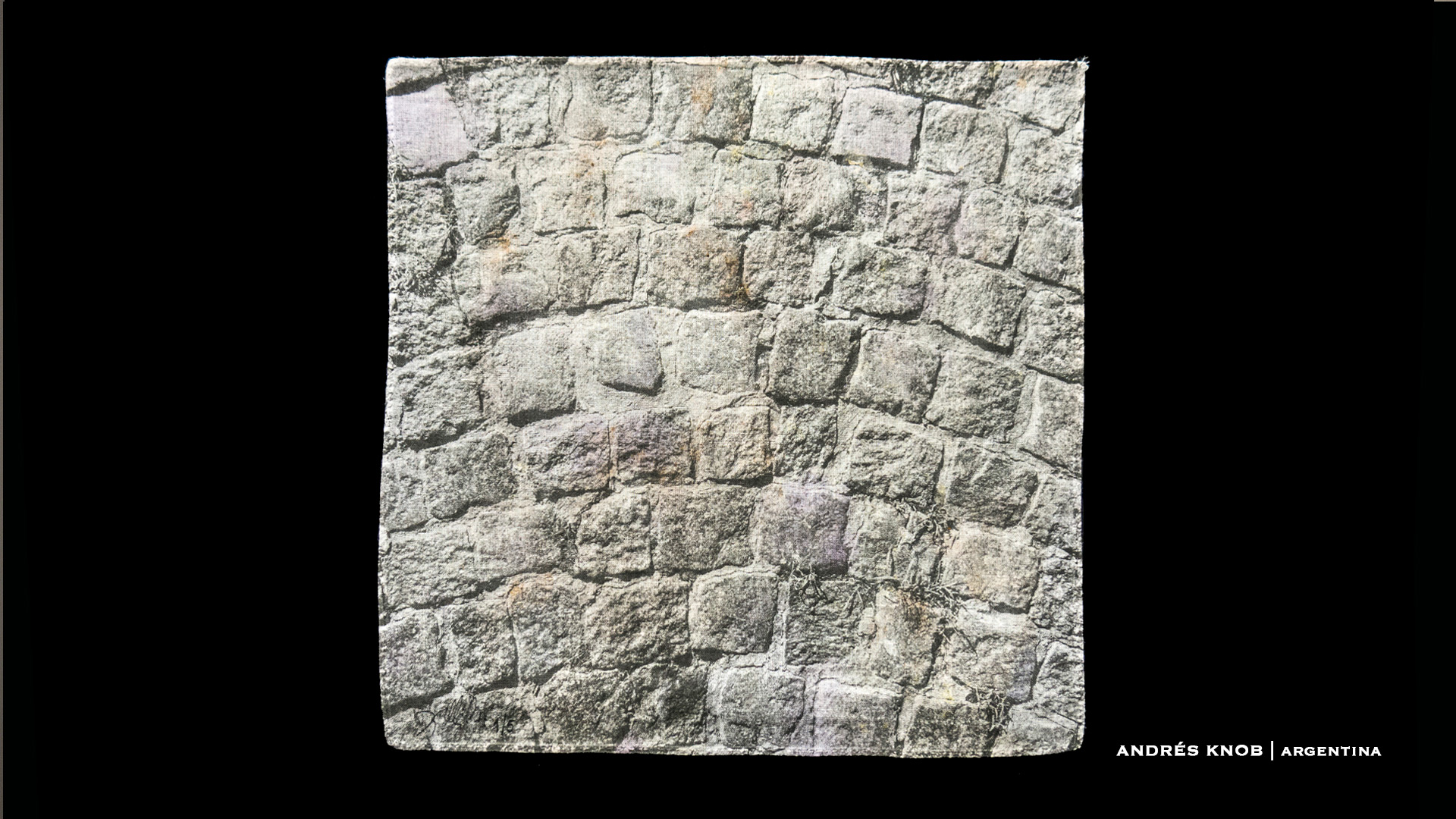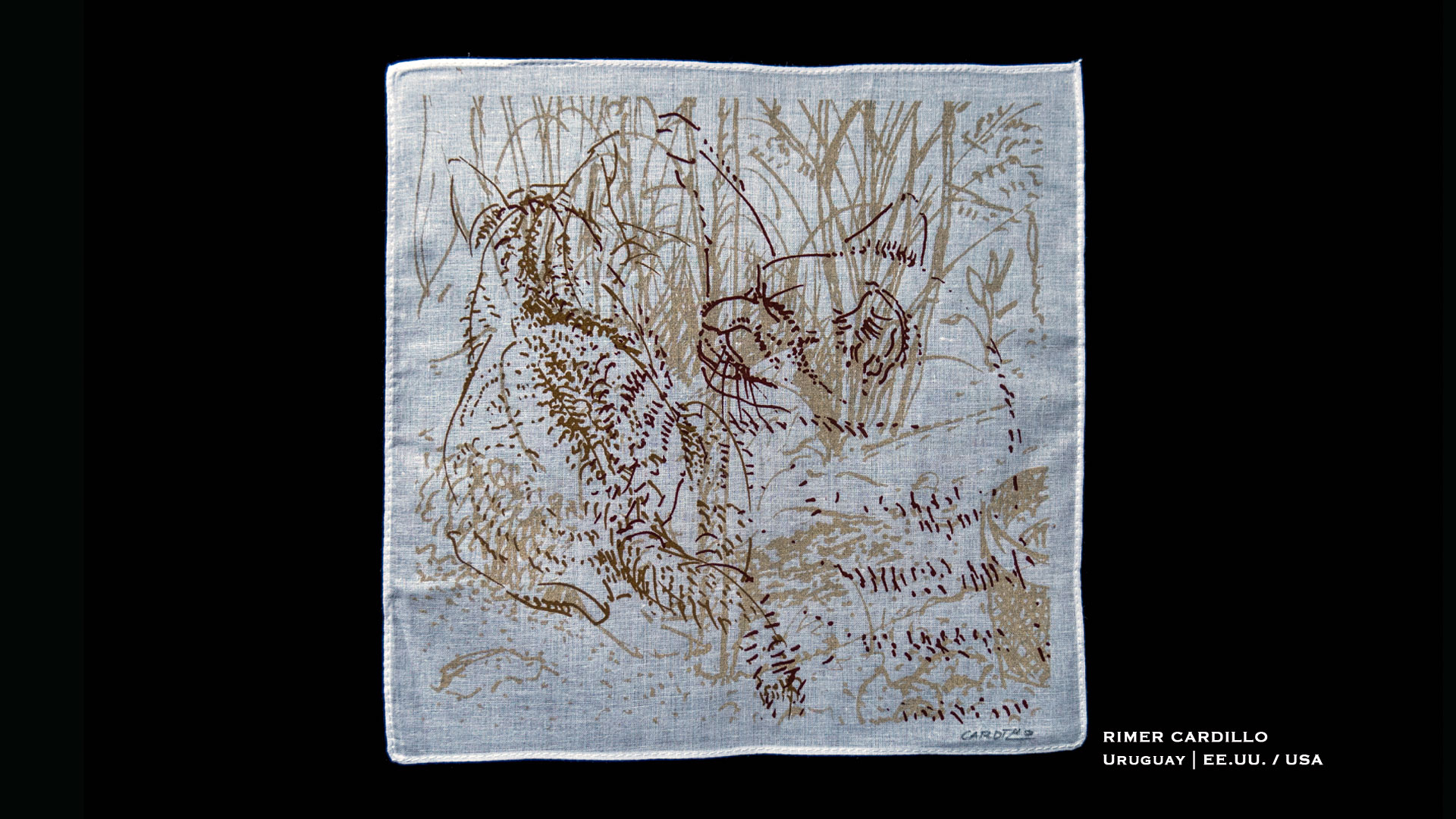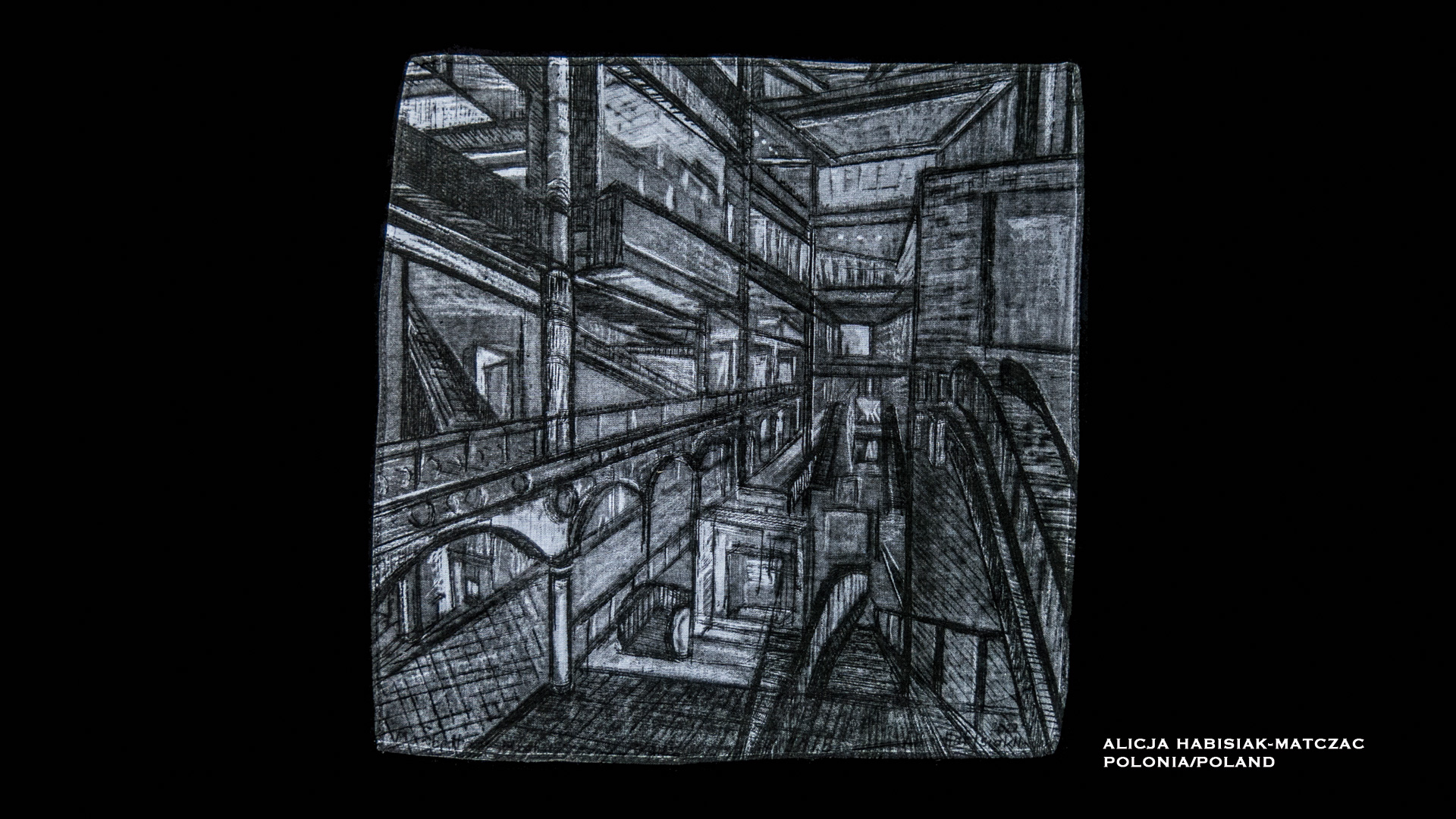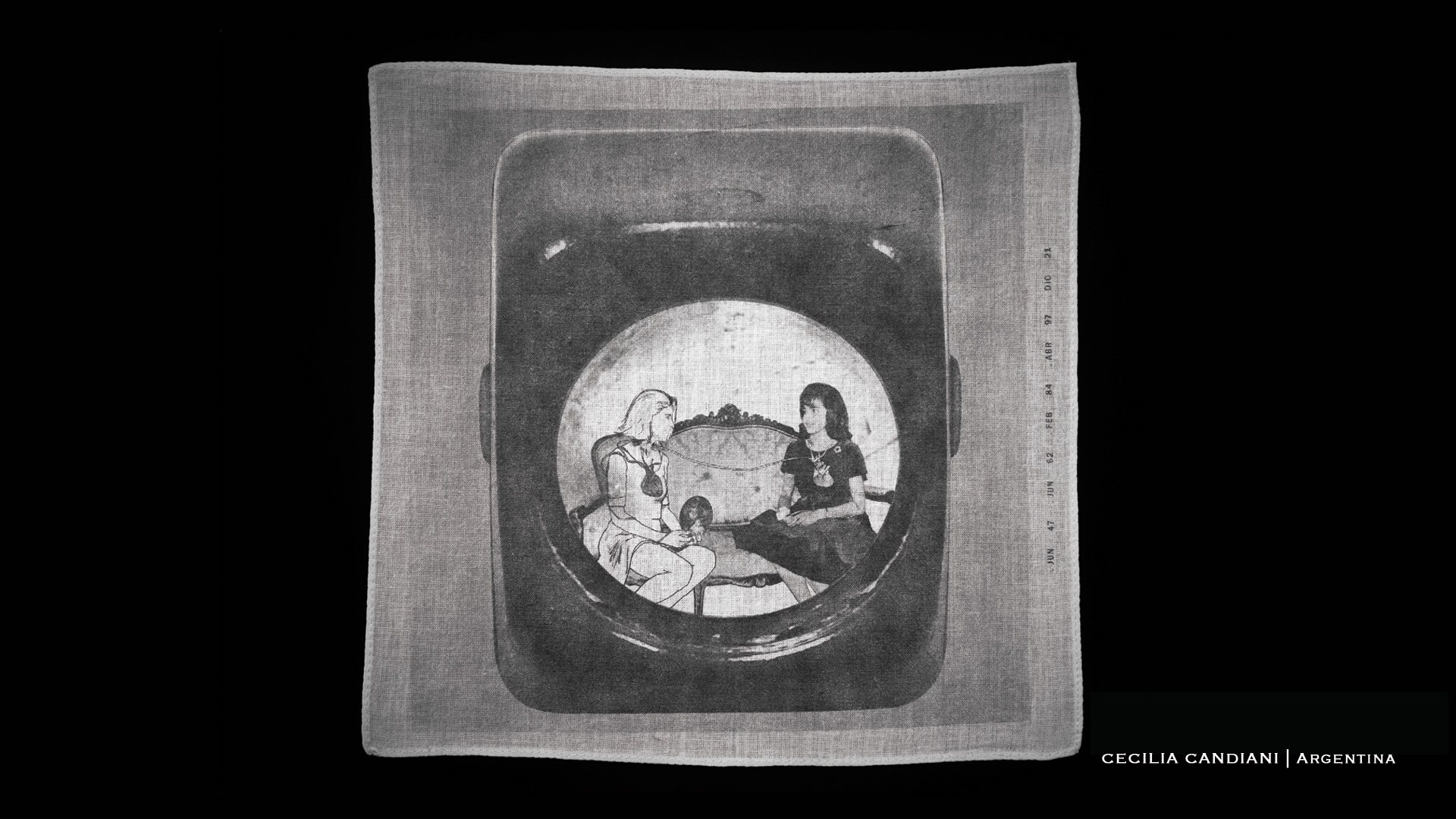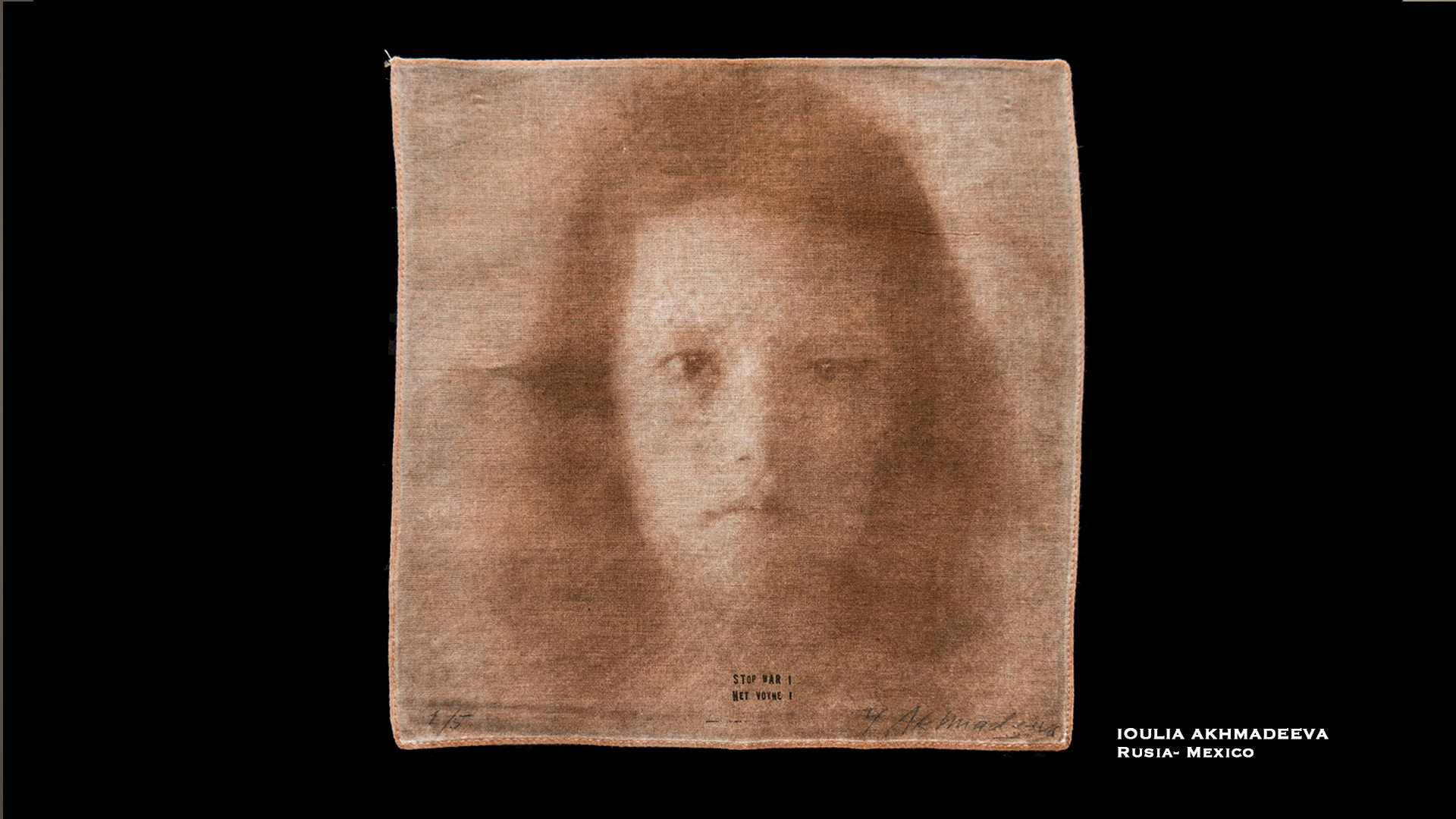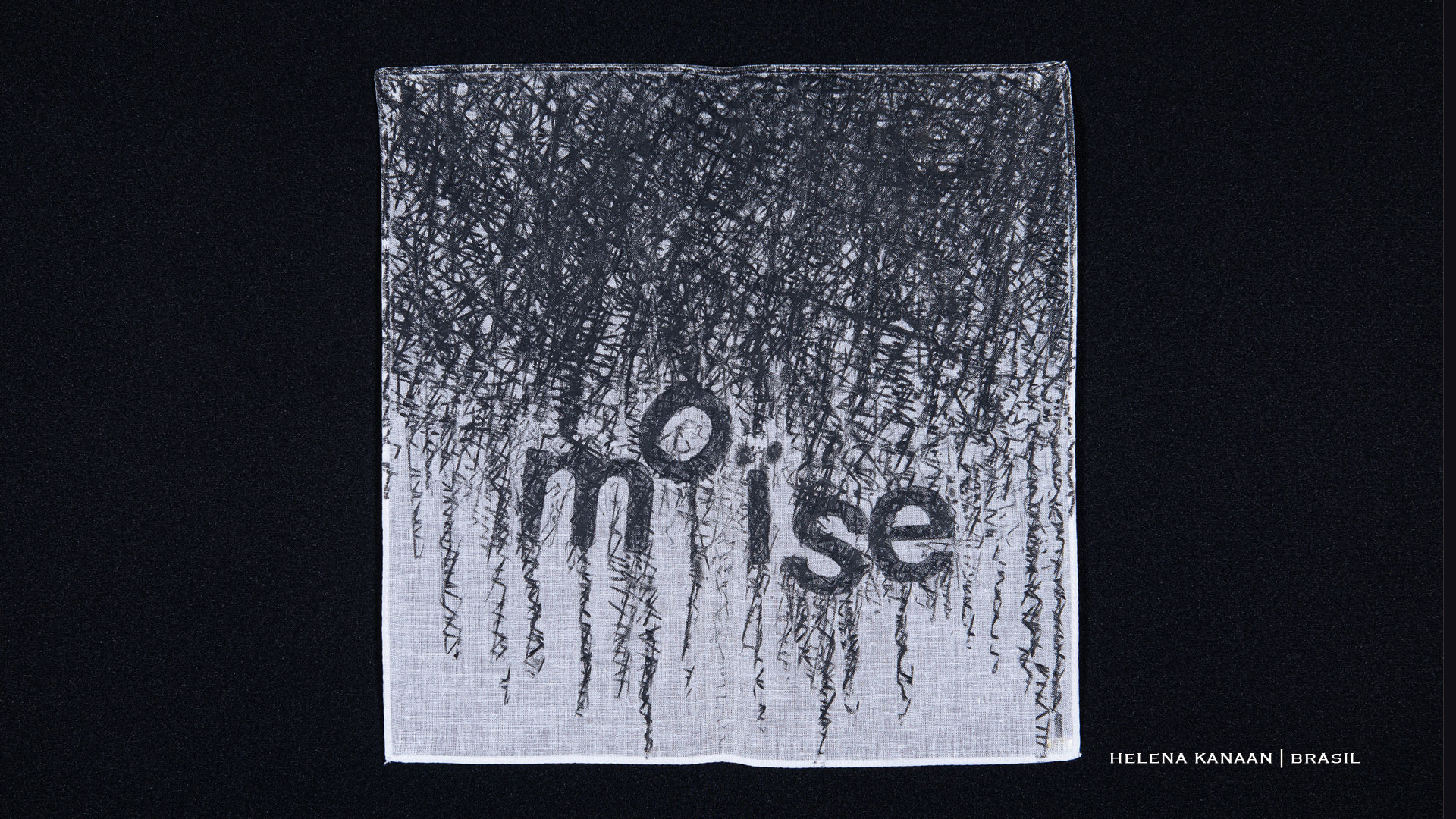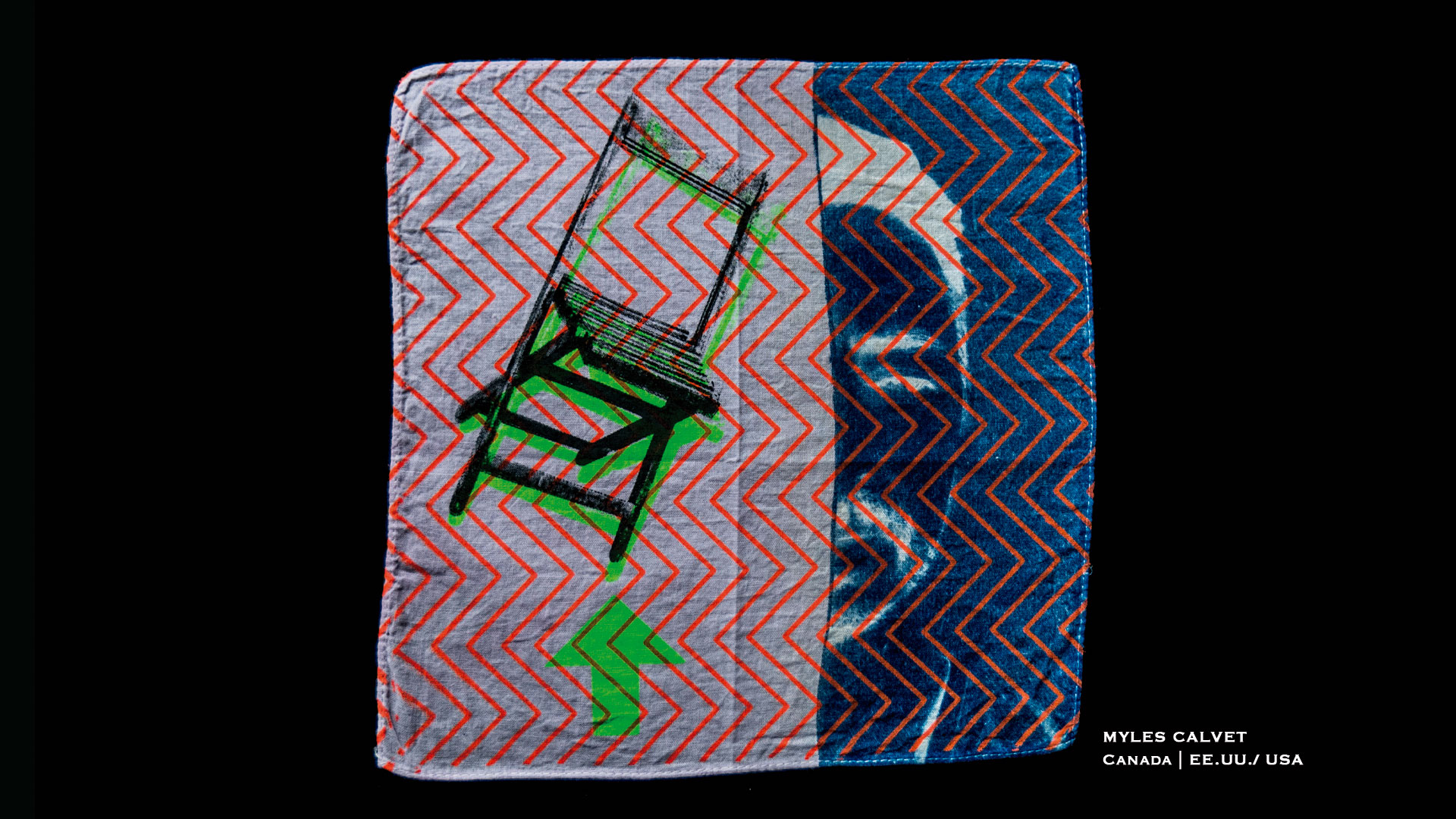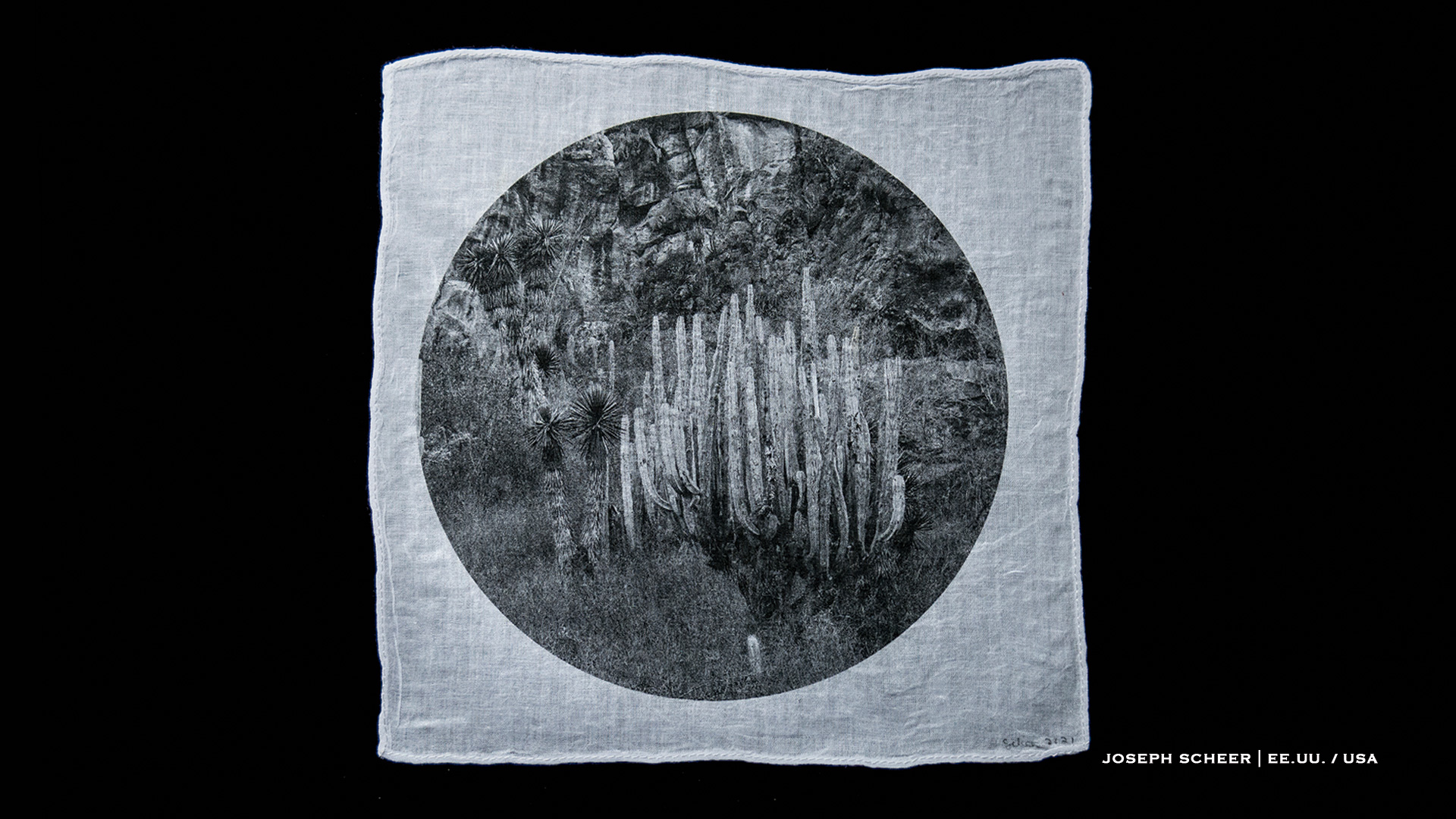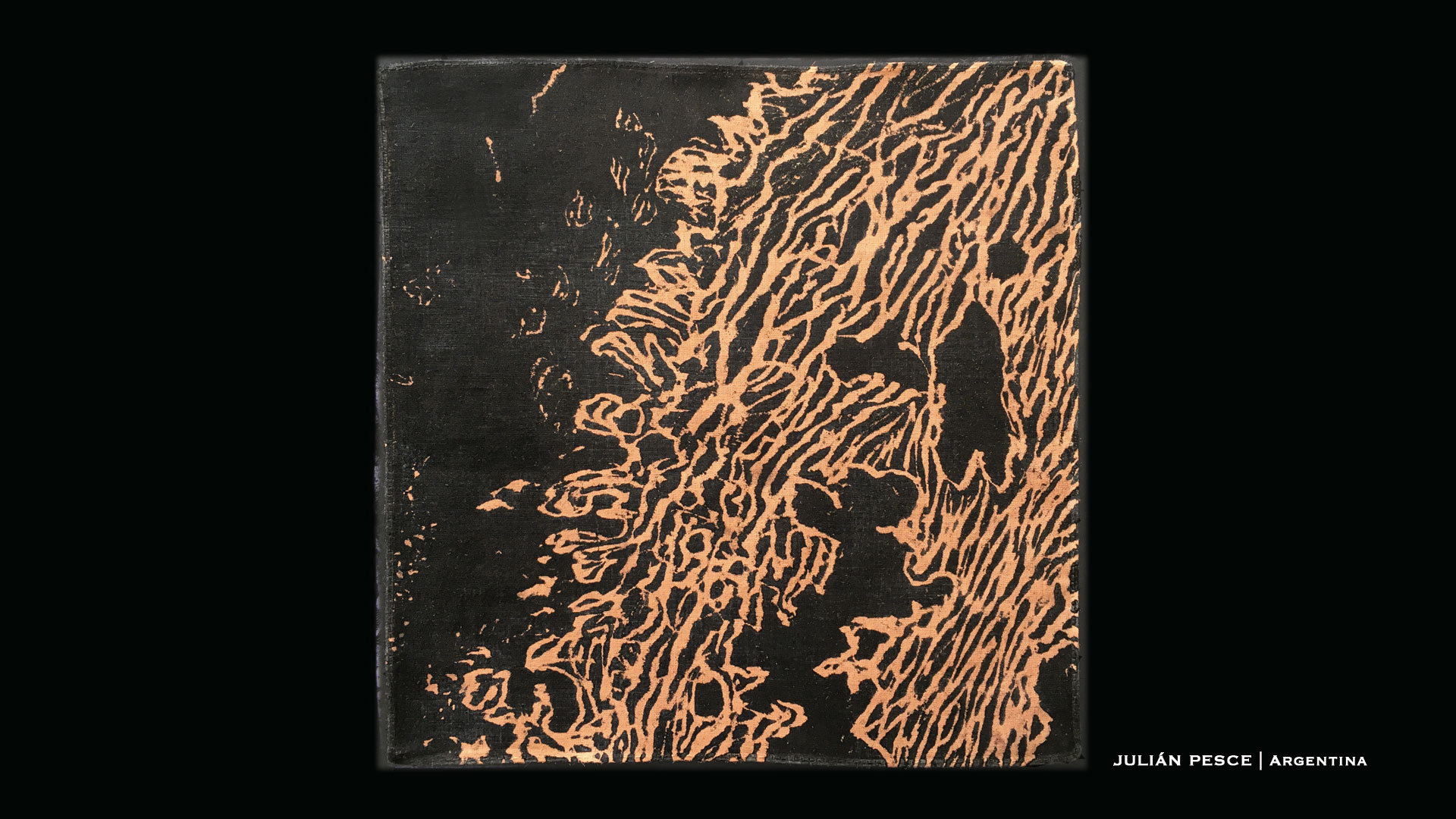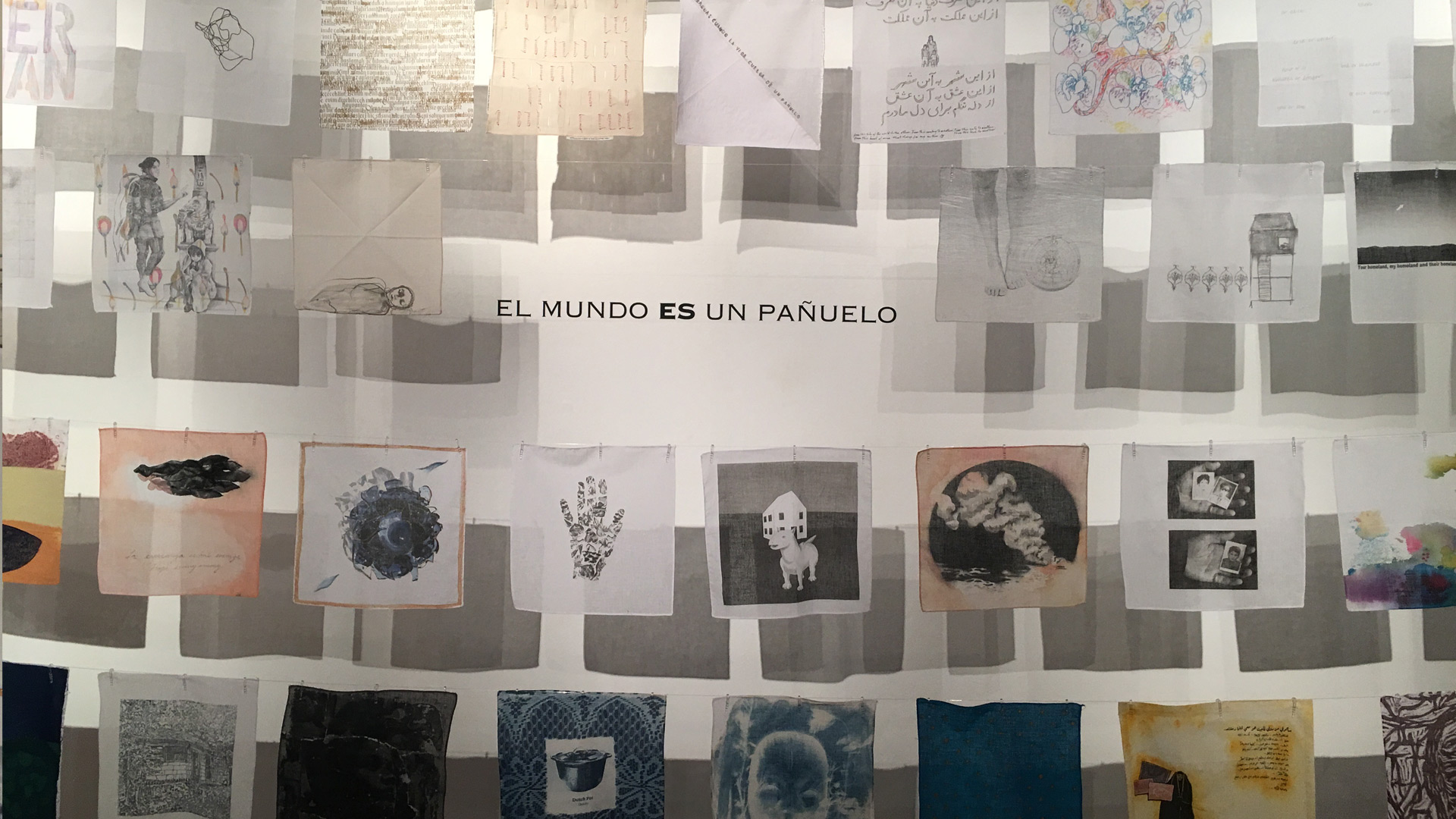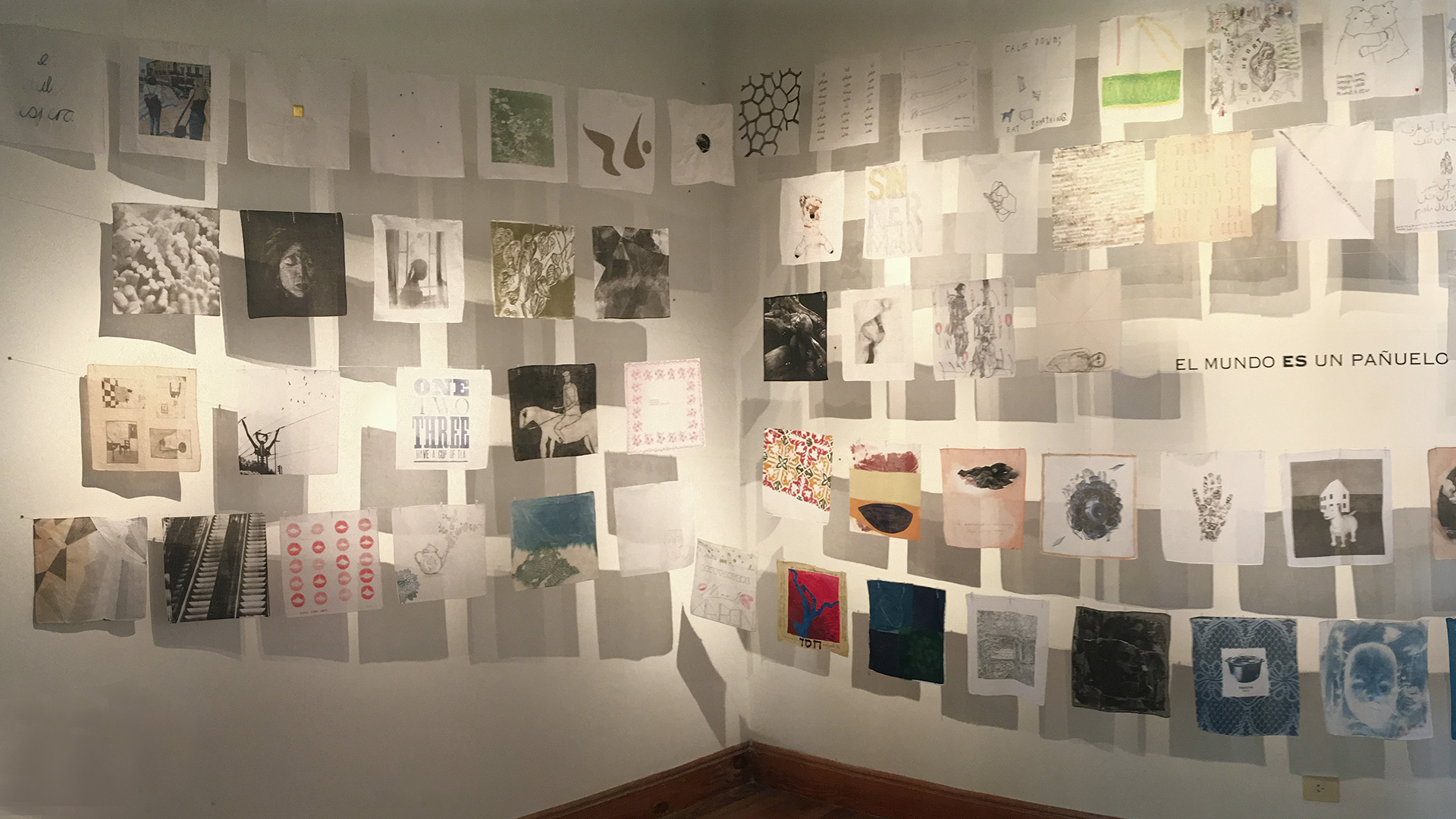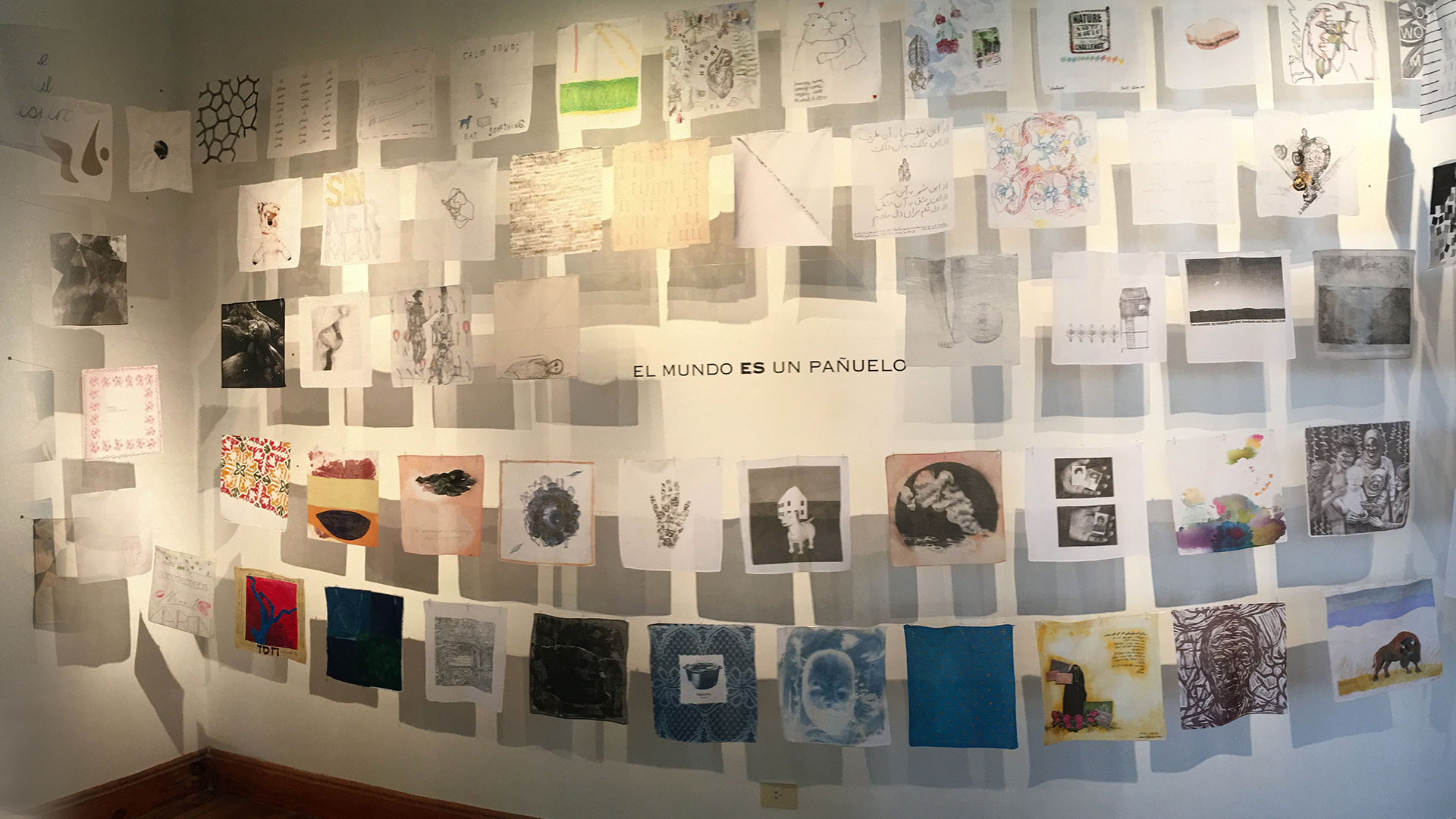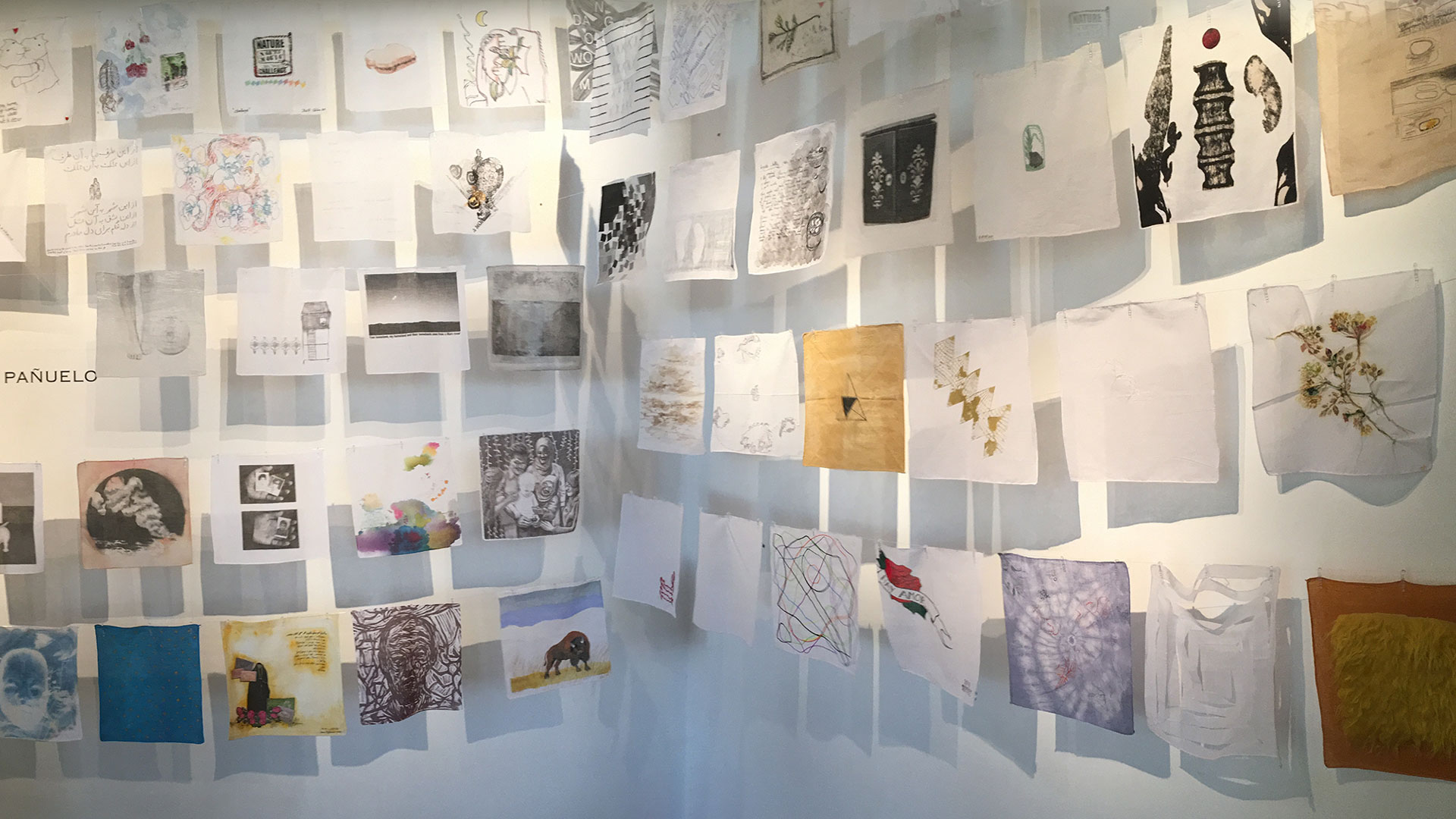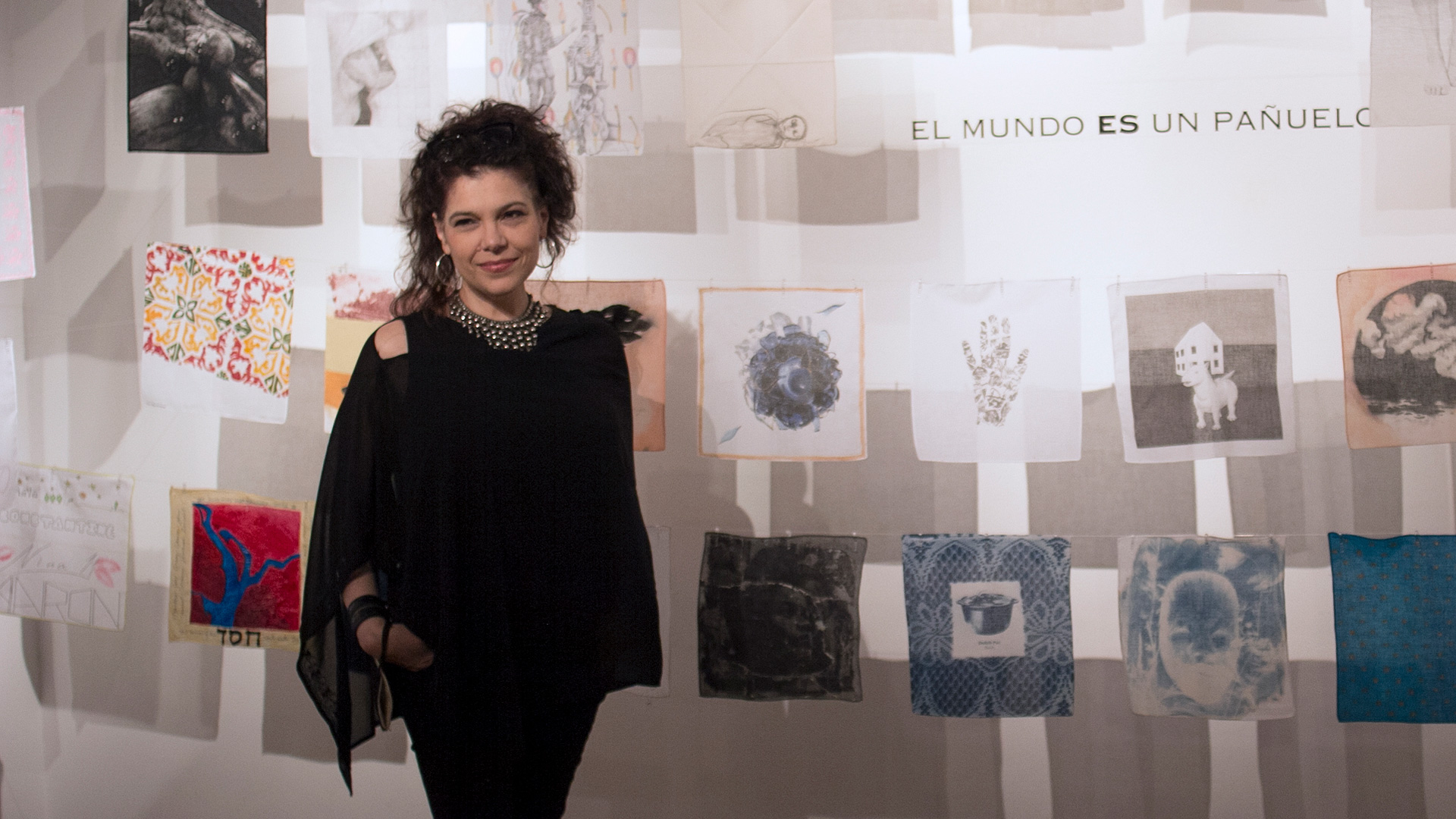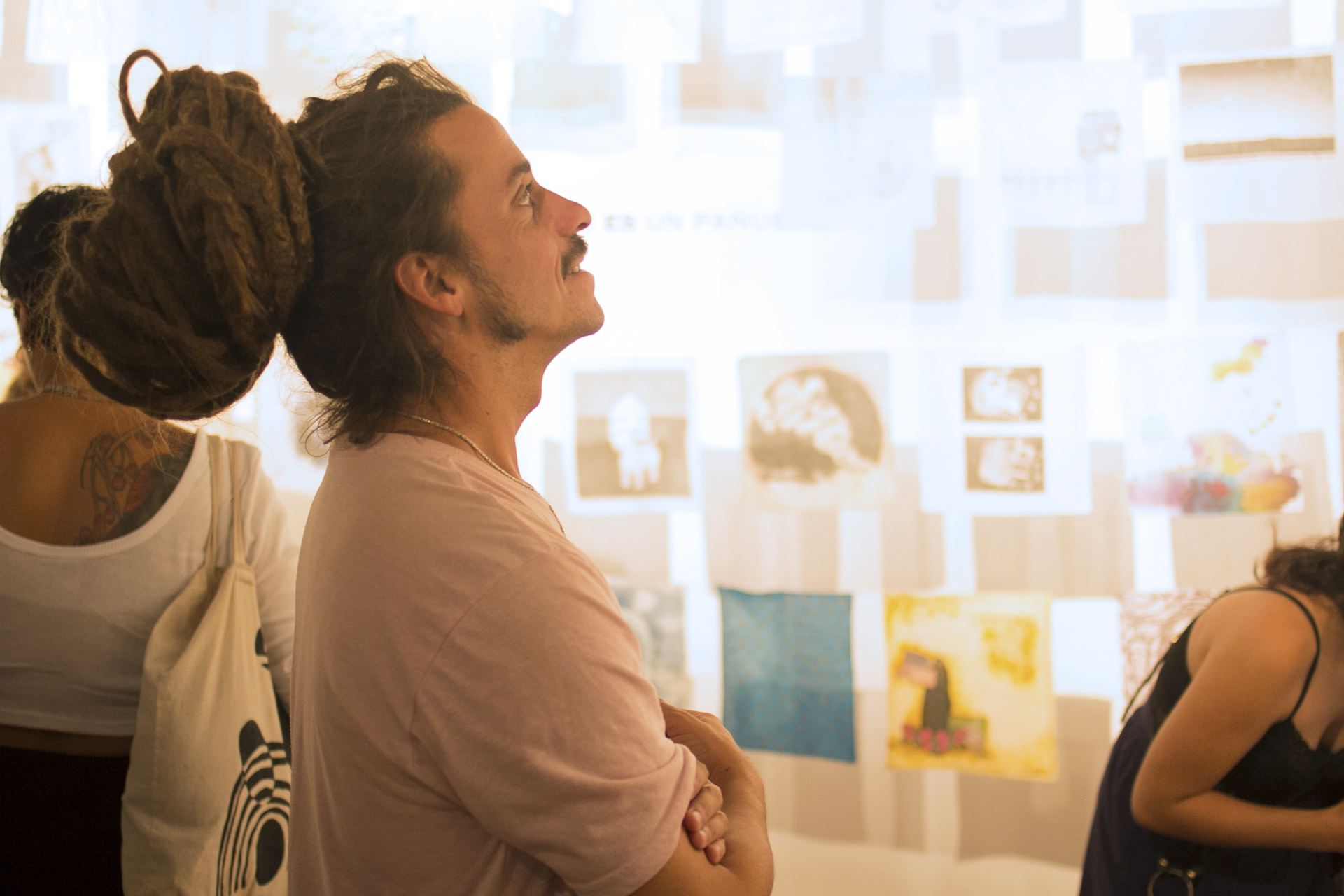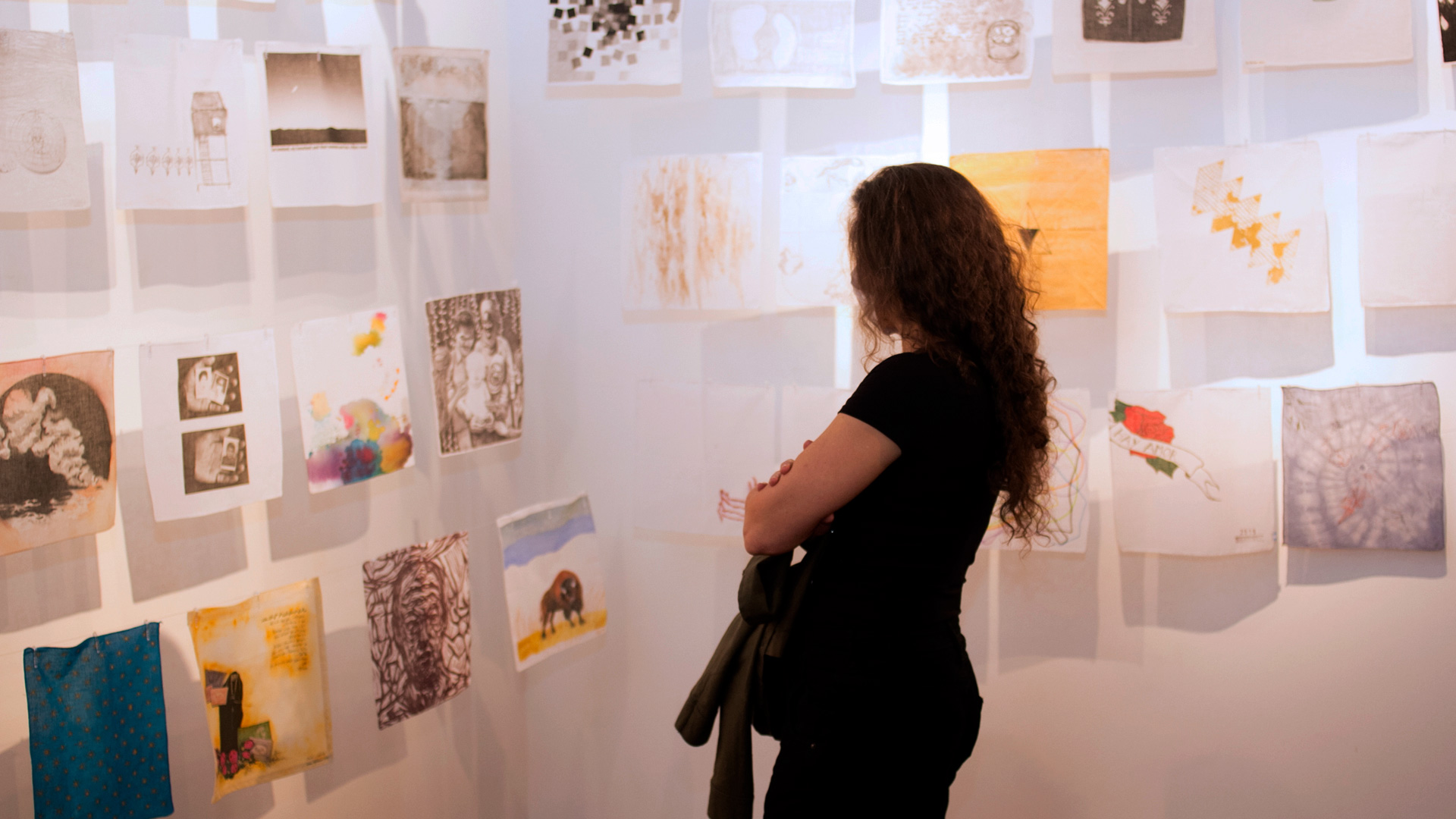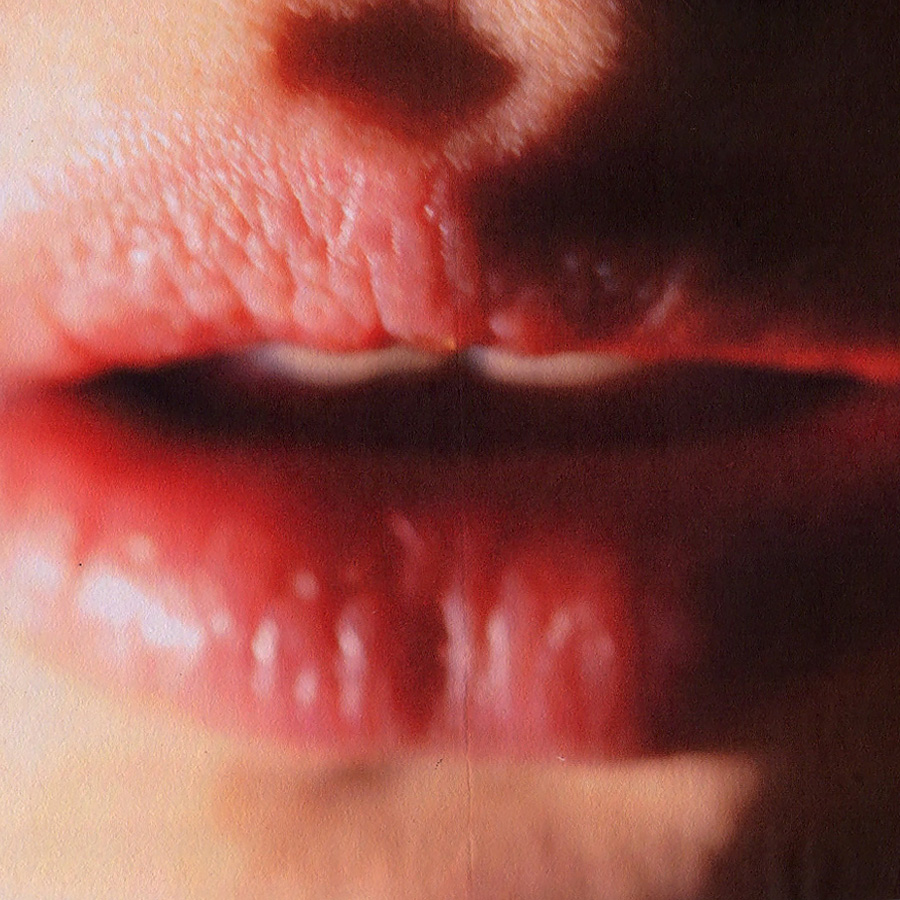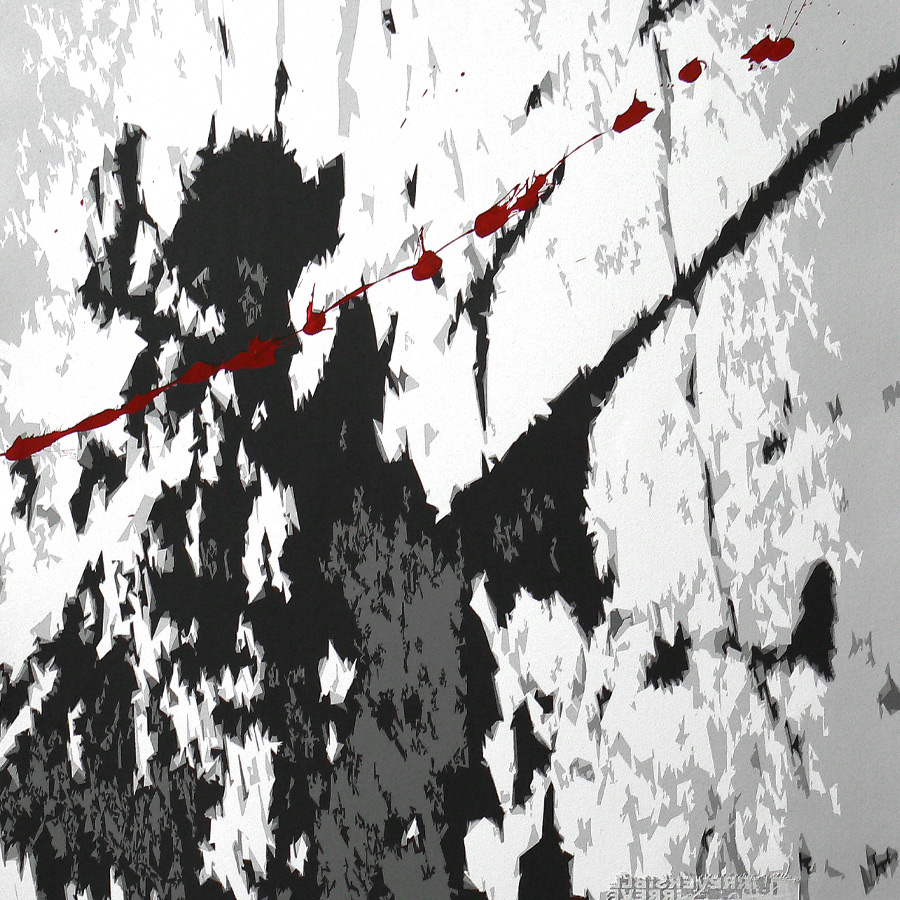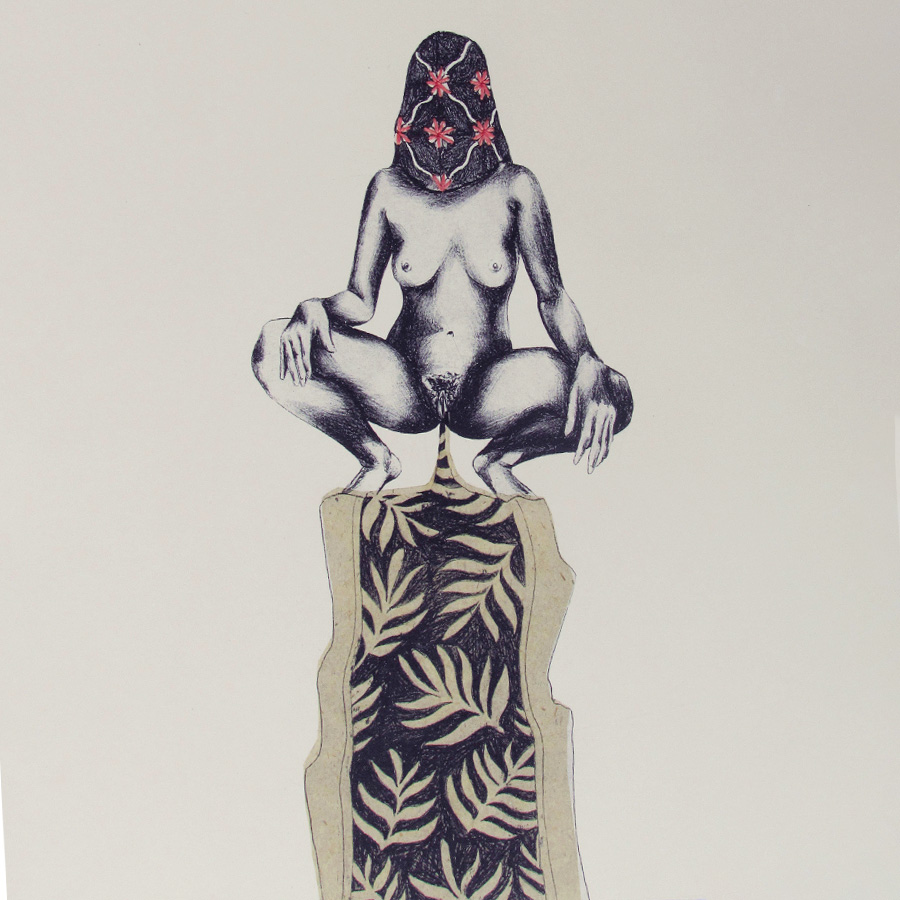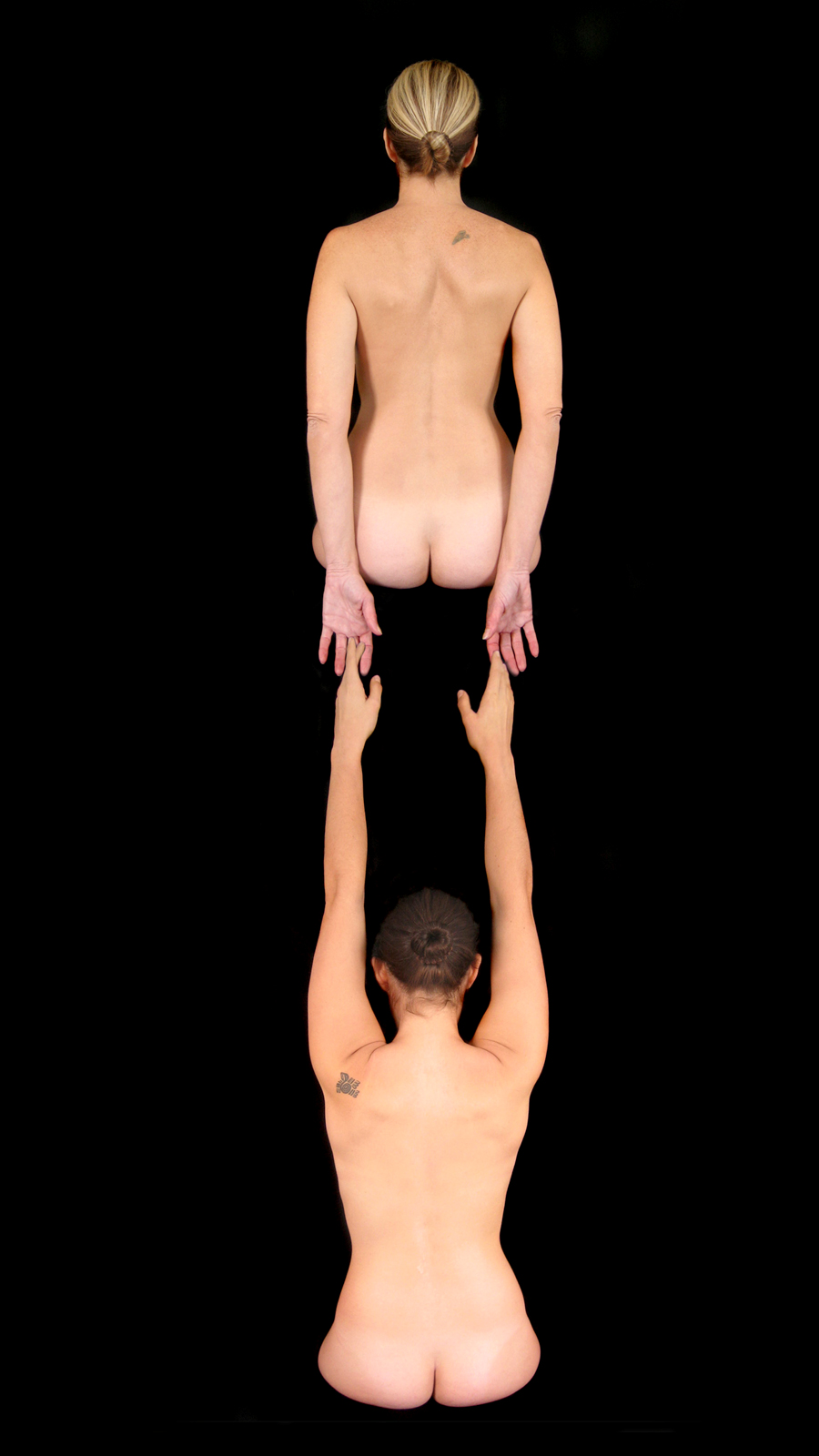Activities
International Projects, Exhibitions
The World IN a Handkerchief
´ace´s genealogy
23.03.22 06.05.22
For a month and a half, the Políglota Room is hosting three exhibitions on a rotating basis. From March 23 to April 1, “The world IS a handkerchief” and “The world IN a handkerchief: the genealogy of ´ace” were exhibited simultaneously, paying special tribute to the Argentine artist Graciela Sacco. While the original series returned to New York from where it will soon travel to England, the ‘ace genealogy collection was joined by a new exhibition of large format pieces of the participating artists, some belonging to the Fundación’ace collection and others to the private collection of Alicia Candiani.
The World IS a Handkerchief : El mundo es un pañuelo
A Wandering Genealogy curated by Claudia DeMonte & Cecilia Mandrile
The World IN a Handkerchief : El mundo en un pañuelo
Guest Curator, genealogy Proyecto’ace: Alicia Candiani
The World IS a Handkerchief is a travelling exhibition rooted in the Spanish saying ‘el mundo es un pañuelo,’ which translates into English as ‘this is such a small world’. The project traces serendipitous encounters, moments of discovering personal connections in distant places or unexpected contexts. The project began with the meeting of Claudia DeMonte and Cecilia Mandrile as a mentor and student respectively at the University of Maryland, United States in 1995 and has expanded through an international collaborative network between mentors, students and
peers.
The World IN a Handkerchief is a new chapter of the project, a graphic, soft and traveling portfolio curated by guests artists from the core genealogy. Artist and curator Alicia Candiani, essential mentor of this genealogy, Founder and Director of Proyecto´ace, has been invited to curate this new collection that reflects her close creative family.
ABOUT THE WORLD IN A HANDKERCHIEF by Cecilia Mandrile
Handkerchiefs have accompanied people in celebrations and farewells in many cultures for centuries, offered bodily protection and coverage, and sustained expressions of political tenets and spiritual beliefs. In this project, handkerchiefs become vessels of memories and itinerant narratives; containers of emotions; translators of wounds, signals of ideological resistance. Each piece epitomizes a soft space that holds disappearing recollections of homeland as well as reflections on displacement and identity that can be carried as a tangible memento. In times when touch appears as a dangerous sense, every single printed handkerchief means a meaningful testament of the continuous nurturing mentorship among artists and educators, reminding us that the soft touch remains both an intimate and universal need of communication.
To celebrate this constant and sustained creative dialogue, in 2019 the curators developed a portable exhibition of 50 handkerchiefs that explored the meaning of belonging and interconnectedness that this Spanish saying so tangibly evokes. In the reconstruction of this alternative family made up of artists and collectives from different latitudes and generations during the last two decades, both printed an edition of 25 handkerchiefs, and sent a printed handkerchief along with a blank handkerchief to 50 invited artists to intervene with their own reflections
on home, identity and belonging. From this exchange a “wandering genealogy” was born, a tribute to the strong threads that have woven this shared territory as itinerant artists and educators.
A limited edition catalogue including the work of 50 invited artists was published by Impact Press, Bristol, UK and includes an essay by Gill Saunders, Senior Curator of Prints, Victoria & Albert Museum, London. Currently, the catalogs of workshops and portfolios remain as digital publications, thus allowing to document the constant growth of this genealogy. Chris Knollmeyer, a sound artist in residence at ´ace at the same time, composed for this exhibition a special piece: “Sound of the Handkerchiefs”. The piece is a piano study made up of 25 melodies. Just as the handkerchiefs are tied to each artist’s history and sense of home, Chris feels a connection to the piano.
Related artists
Graciela Sacco
In Memoriam
Claudia DeMonte
Guest artist
Chris Knollmeyer
Composer of the piece “Sound of the Handkerchiefs” that accompanies the exhibition
OPENING
March 23, 7PM. Sala Políglota
FINISSAGE
April 27th, 1PM
The World is a Handkerchief |El mundo es un pañuelo
Exhibitions
2019 | London Print Studio Gallery, London, UK
2020 | Galería Blackburn 20|20, Elizabeth Foundation for the Arts,New York, USA
2021 | IMPACT11, Hong Kong, China
Catalogues | Instagram |Vimeo
Essay for the exhibition catalogue
Alicia Candiani
The Hankerchiefs´World
23.09.22
Genealogy | noun
UK /ˌdʒiː.niˈæl.ə.dʒi/ US /ˌdʒiː.niˈæl.ə.dʒi/
[ U ](the study of) the history of the past and present members of a family or families.
For this project, the invited artists were asked to talk about their worlds, to turn inward and investigate themselves, to dig their own stories, the joys and sorrows washed in these little pieces of cloth. Family and childhood nostalgia were, of course, unavoidable routes. The memory of the father or mother appears frequently. Beth Grabowski (USA) connects her work with the white scarf with which she was forced to cover her head during the ritual of the mass (a tradition that her Catholic Polish émigré father wanted to maintain) with the shame of wearing it growing up in a Protestant environment . Adriana Moracci prints the folds of her father’s handkerchief, whom she has recently lost, seeking in that elusive trace to unfold what is not there. Cecilia Candiani works with a photo of her mother, who died prematurely when she was 13 years old, and through an old slide viewer she seeks to discover it in order to look at it again while exploring her own sense of self. In the same way, Julián Pesce pays homage to his mother, an artist-sculptor who died young at the height of her creative process. Intervening the handkerchief with a piece of the xylography “Los Ojos del Caburga y su laguna azul” (a landscape they shared on their travels and in which she was inspired to make some pieces, from the series “Los llorones”) Julián associates the image – made during the pandemic – both to a period of great sadness and collective mourning. Affective memory and immediate present coexist in the work of Andrés Knob. An image of cobblestones that represents the streets of Buenos Aires – where he played as a child – serves as a support for the violet colors of the jacaranda flowers, harvested by his own hands, representing the sky on the sidewalk and its roots in a handkerchief.
Two artists use their handkerchiefs to denounce social and political injustices. They reflect on two events that occurred simultaneously at the time they were carrying out this project, and that had international repercussions. Ioulia Akhmadeeva (Russia), of Russian and Ukrainian grandparents, prints “Stop War/ Net Voyne!” during his residency at ‘ace. The work was born jointly with the Russian invasion of Ukraine and his feeling of belonging to both parties. The artist represents the face of her daughter Nebi as both, a Holy Shroud and as a sign of her Resilience: Penance and Protest. For her part, Helena Kanaan (Brazil) uses her headscarf to talk about the racial constitution of Brazil denouncing the structural racism of her society and the xenophobia against foreigners, through Moïse Mugenyi Kabagamb, a young Congolese man beaten to death in an exclusive Barra da Tijuca neighborhood in Rio de Janeiro.
But the sense of joy also emerges in these personal reflections. The handkerchief of Micaela Trocello (Argentina) portraits the music and movement in the handkerchiefs that shake in the hands of those who dance the Zamba. “The sound of the handkerchiefs” is a musical piece that Chris Knollmeyer – sound artist in residence at ´ace at the same time as the preparation of this project. It was composed especially for the exhibition: a piano study of 25 melodies that express his special connection with this instrument, pure and evocative music. My own work, was also inspired by the sound of our neighbor’s daily morning piano rehearsals along the visual documentation images of Chris’ recordings as he was composing it. Raising the need for environmental preservation, hope in nature is also present in the works of Joseph Scheer (USA) and Rimer Cardillo (Uruguay), as well as the human body assimilated to the grandeur of the landscape in Guy Langevin’s handkerchief (Canada).
The idea of open and lonely spaces; of a free or occupied seat; of spontaneous registrations of transitional homes; of celestial maps; of the scope of our imagination and the transit through hope and dreams; they appear respectively in the works of Alicja Habisiak Matzack (Poland), Myles Calvert (Canada), Guillermo Mena (Argentina) and Miguel Rivera (Mexico), all of them also associated in some way with forced confinement.
Finally, the work by a collective formed by Canadian artists Liz Ingram and Bernd Hildebrandt gives a closure to this genealogy summarizing its spirit. “Touch me-Tócame”, uses the verbs “to touch” and “tocar” in both the tactile and emotional senses, celebrating communication, appreciation, and the crossing of boundaries with care.
IMPACT 12
“The Printmakers Voice”
September 20-25, 2022
VENUE 2
UWE University of the West of England
CFPR Center for Fine Print Research
Frenchay Campus, Bristol, UK
Proyecto’ace is defined by those of us who make it. Above all, this is a space that is rooted on the deconstruction of the technique dialoguing with the construction of the concept. But ‘ace is also as an affective space, where collaborative work is valued by listening to each other, by coexistence from sharing food to the successes and failures that are embraced by all.
The emotional thread that connects the genealogy of ‘ace brings together international artists who, throughout our 18 years of existence, have inhabited our workshops either as residents, guests or members of the team that runs the program. Some arrived at the beginning of their career, others when they were already established artists, some were my mentors and others were mentored by me. From Rimer Cardillo, the first artist representing Proyecto’ace at the Ljubljana Biennale in 2005, to Ioulia Akhmadeeva, who was in residence in March 2022 while finalizing the exhibition the World in a Handkerchief in Buenos Aires, every single artists left their imprint and collaborated in the construction of the genius loci – the “spirit of a place”, as the ancient Romans defined it – of ´ace with their different but equally important contributions.
